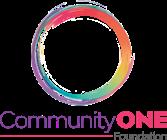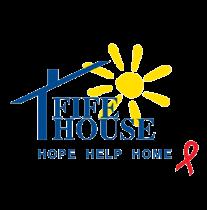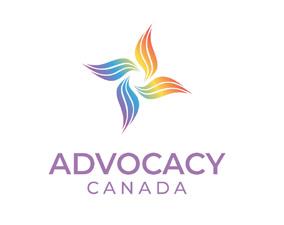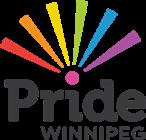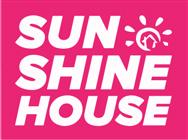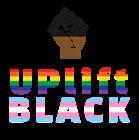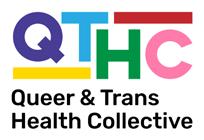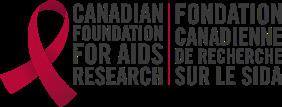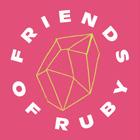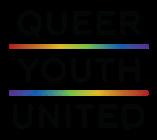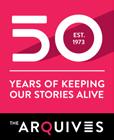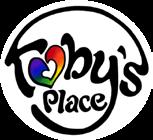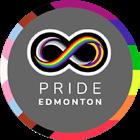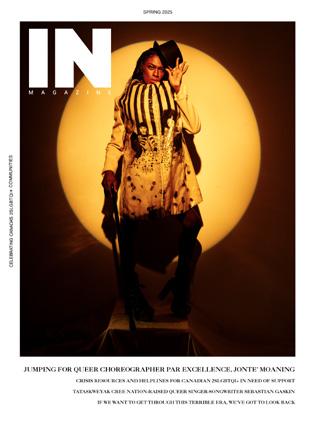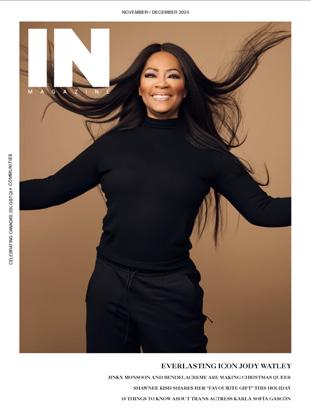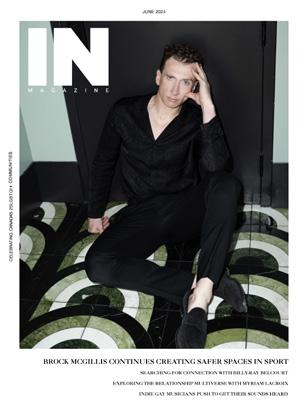
A MOVEMENT
TRANSCENDING MUSIC WITH JEREMY DUTCHER
QUEER VENEZUELAN SOPRANO SAMUEL MARIÑO
CODY RIGSBY GETS PERSONAL




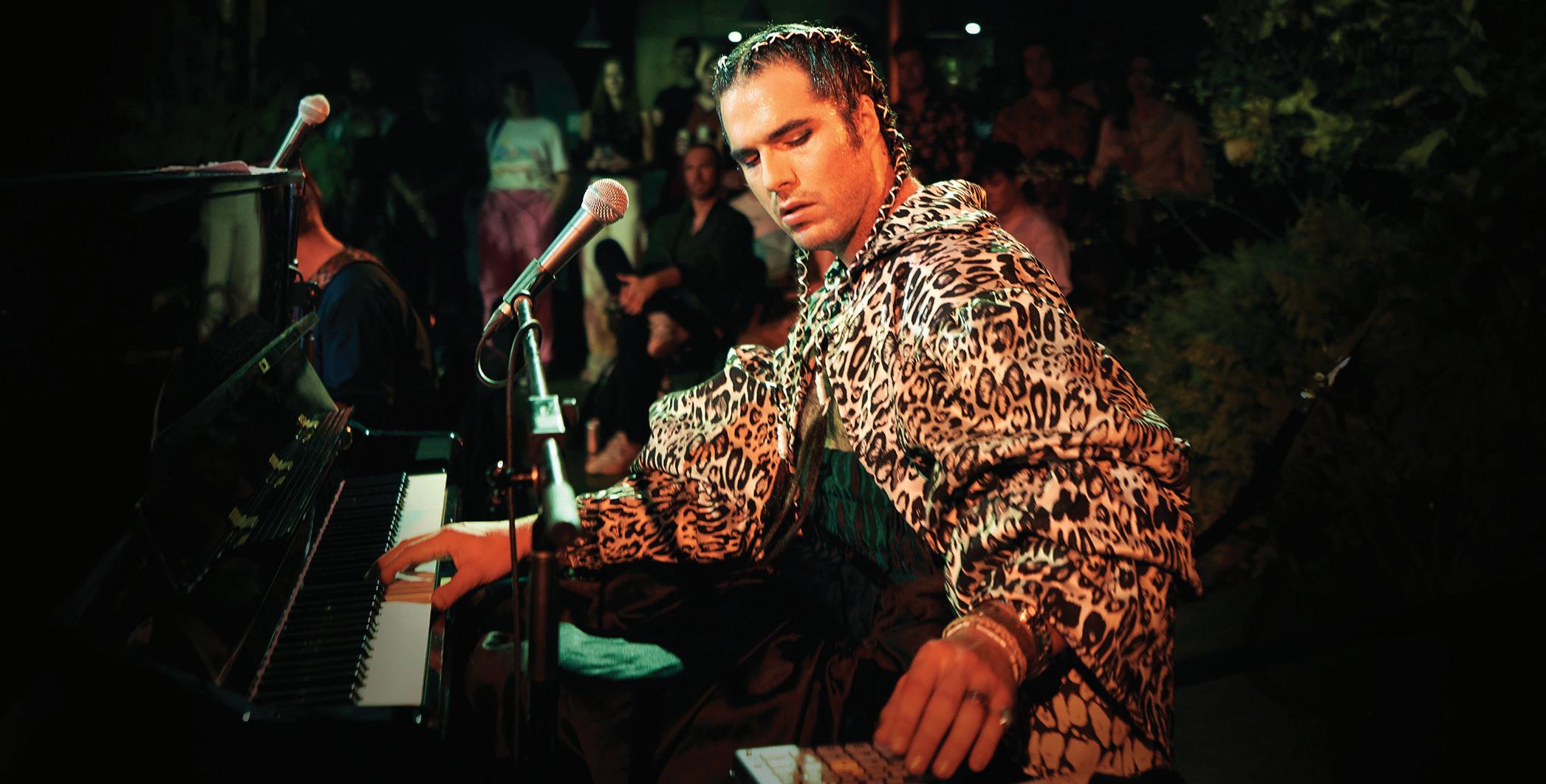



TRANSCENDING MUSIC WITH JEREMY DUTCHER
QUEER VENEZUELAN SOPRANO SAMUEL MARIÑO
CODY RIGSBY GETS PERSONAL






PUBLISHER
Patricia Nicolas
EDITOR
Christopher Turner
ART DIRECTOR
Georges Sarkis
COPY EDITOR
Ruth Hanley
SENIOR COLUMNISTS
Paul Gallant, Doug Wallace
CONTRIBUTORS
Adriana Ermter, Shane Gallagher, Michael Hak, Paul Hutnick, Elio Iannacci, Karen Kwan, Stephan Petar
DIRECTOR OF DEVELOPMENT
Charlie Smith
COMMUNITY RESOURCE NAVIGATOR
Tyra Blizzard
ADVERTISING & OTHER INQUIRIES
(416) 800-4449 ext 100 benjamin@elevatemediagroup.co
EDITORIAL INQUIRIES (416) 800-4449 ext 201 editor@inmagazine.ca
IN Magazine is published six times per year by Elevate Media Group (https://elevatemediagroup.co). All rights reserved. Visit www.inmagazine.ca daily for 2SLGBTQI+ content.
180 John St, Suite #509, Toronto, Ontario, M5T 1X5

ON THE COVER: Marsha P. Johnson
ILLUSTRATOR: Michael Hak
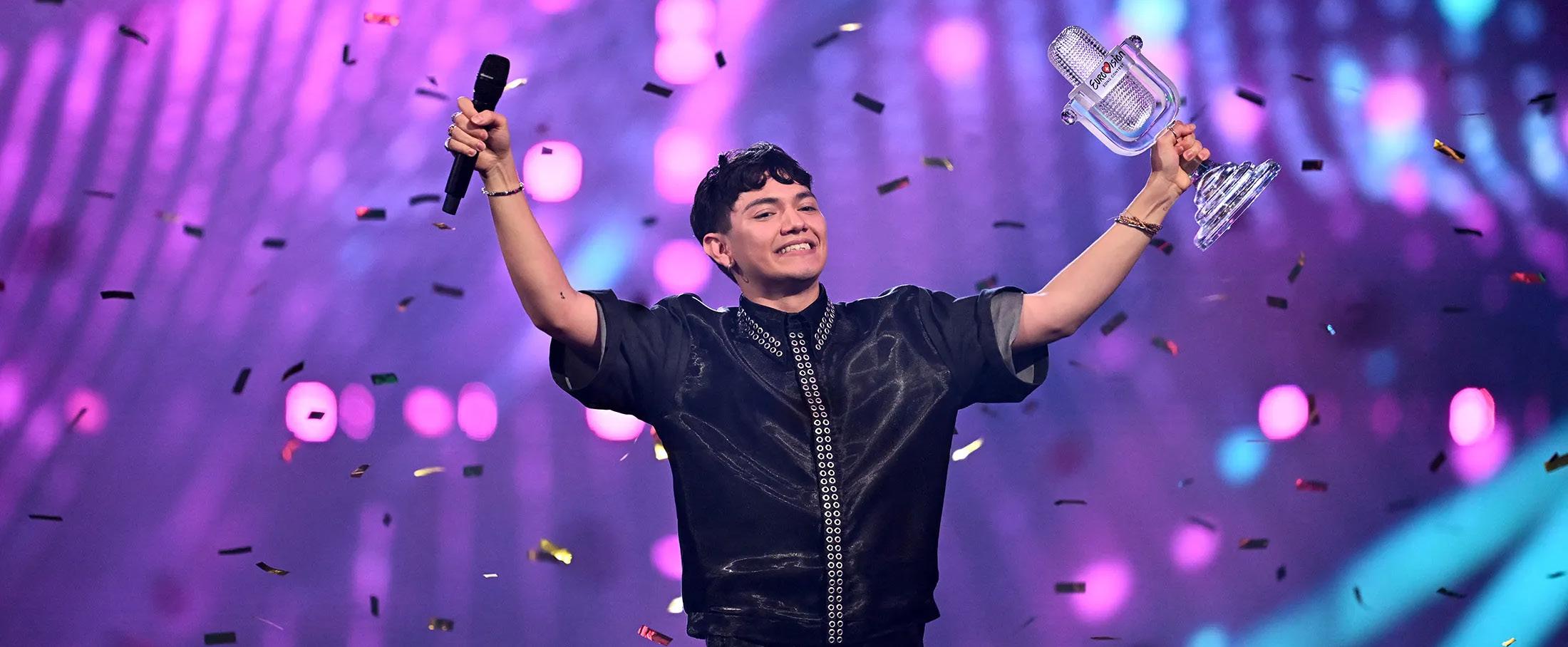
Issue 124 JUNE 2025
INFRONT
Austria's JJ won the 2025 Eurovision Song Contest in May with the pop-opera song “Wasted Love,” making him the third LGBTQ+ winner in a row. At the press conference after his win, he told reporters that it demonstrated “amazing acceptance and equality for everyone.” He also said: “I'm so so so happy that I'm representing this amazing community.”
FEATURES
06 | FROM PAIN TO PURPOSE: KENDALL GENDER ON PAVING A PATH TO SOBRIETY FOR OTHERS
The Canada’s Drag Race runner-up talks about launching her foundation with the hopes of helping 2SLGBTQI+ individuals conquer addiction
09 | THE RED DRESS BALL HAS ITS LAST DANCE
The final edition of the beloved fundraiser took in $60,000 and has raised close to $400,000 since its inception, the proceeds of which have supported a variety of local HIV charities
10 | 10 FAST FACTS ABOUT PRIDE PAST AND PRESENT
How much do you know about the Pride movement in Canada and around the world?
12 | KYO LEE ON LANGUAGE, LOVE AND THE POETICS OF BELONGING
IN sat down with Lee, whose debut poetry collection explores learning to love through a youthful, queer diasporic Korean lens
14 | PRIDE MUST-READS…ACCORDING TO 2SLGBTQI+ BOOKTOK CREATORS
With #BookTok becoming a go-to resource, we asked creators on TikTok what novels they wish they could read again for the first time
16 | SCENT SUBVERSION
Seven fragrance disruptors are rewriting the rules of perfume
18 | WHO IS THE REAL CODY RIGSBY?
Cody Rigsby is more than the sassy Peloton personality you know and love – he’s a gay Trojan horse and a queer advocate
22 | MARSHA P. JOHNSON: THE TRAILBLAZING ICON WHO SPARKED A MOVEMENT
During Pride Month, it’s especially important to remember trailblazers like Marsha P. Johnson, a trans icon and one of the most prominent figures of the gay rights movement of the 1960s and 1970s in New York City
28 | 10 HISTORICAL LGBTQ+ FIGURES WHO CHANGED THE WORLD
Not hiding who they were was just the first thing they did to inspire progress
30 | GEORGE HISLOP: A PIONEERING FIGURE IN CANADA’S 2SLGBTQIA+ RIGHTS MOVEMENT
Canada has its own historical LGBTQ+ figure who helped changed the world
31 | A PACIFIC HIDEAWAY
The official grand opening celebration of The Charles hotel – a new beacon of style and inclusivity – is set for this June
32 | JET-SET SCENE
Sometimes, an extra-extra-long weekend micro-trip is just the ticket to a macro experience
36 | THE VOICE OF A NATION: JEREMY DUTCHER’S REVOLUTIONARY SOUND
We sat down with the one-of-a-kind modern talent to discuss language, legacy and liberation
40 | A TRIBUTE IN SONG
Michael Maimone’s album is a love letter to his late husband
42 | VOICE OF POWER: SAMUEL MARIÑO Fierce, queer and fashion-forward, Samuel Mariño is shattering opera’s limits with style and sound
46 | SUPER-SHERO POWER!
The world’s first animated drag musical fantasy features the voices of Jinkx Monsoon, BenDeLaCreme, Monét X Change and Rosé
48 | SHE CAME TO SLAY
House music’s Barbara Tucker on legacy, longevity, and why queers crown her mother and queen of house
52 | HOW CASUAL SEX HELPED AUTHOR PETE CRIGHTON OVERCOME HIS FEARS
The Toronto writer recently released his memoir
The Vinyl Diaries: Sex, Deep Cuts and My Soundtrack to Queer Joy, which chronicles his second coming out
54 | FLASHBACK: JUNE 5, 1981 IN 2SLGBTQI+ HISTORY
The CDC reports the first cases of AIDS
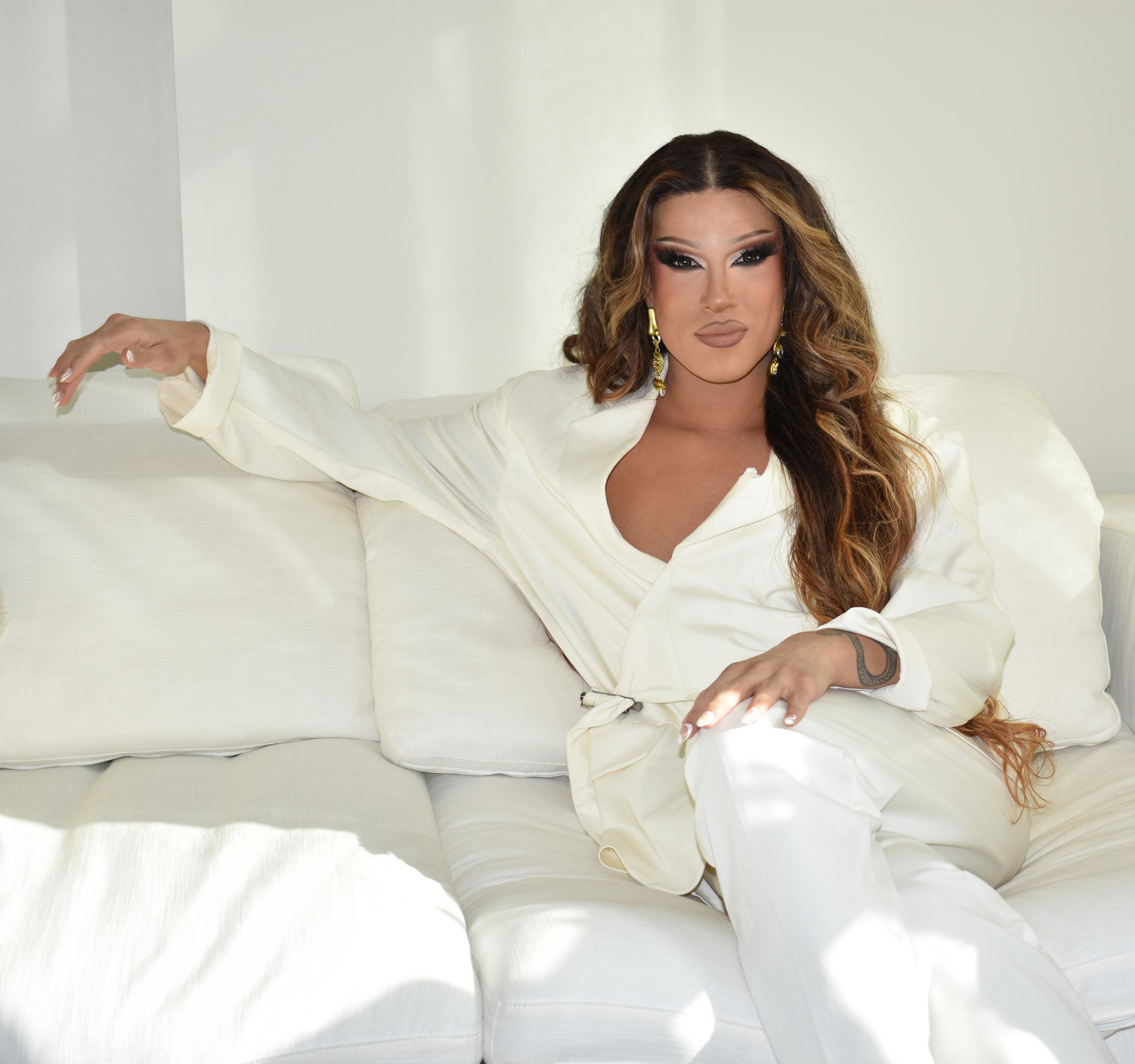
The Canada’s Drag Race runner-up talks about launching her foundation with the hopes of helping 2SLGBTQI+ individuals conquer addiction
By Stephan Petar
During the Season 2 finale of Canada’s Drag Race, Brooke Lynn Hytes asked Kendall Gender about her journey to that point. In her emotional response, Gender gave the world a glimpse into her past struggle with substances. “For me, drugs and alcohol stole so many years of my life and so many opportunities that I feel like I could’ve had. The thing that turned my light back on was drag.”
When the season premiered in 2021, Gender was in her sixth year of sobriety. This year, she will celebrate a decade – and in honour of the milestone, she has launched The Kendall Gender Foundation. The not-for-profit organization raises funds for at-risk individuals seeking treatment at drug and alcohol rehabilitation centres. Partnering with Last Door in British Columbia, the foundation’s goal is to cover the cost of one person’s treatment
every calendar year. On average, the cost for a 90-day treatment can be about $30,000.
The foundation’s idea came to Gender during the Canada’s Drag Race promo shoot but, while she was excited to bring it to fruition, her life after Season 2 was a whirlwind. “Performing and travelling…that stuff took up so much of my time. Now I’m more in control of my schedule…to do projects I’m passionate about, and it’s obviously this,” she says.
Fighting substance abuse in the 2SLGBTQI+ community
According to the Florida-based Addiction Center, “an estimated 20 to 30 per cent of the LGBTQ+ community abuses substances, compared to about nine per cent of the general population.”

Toronto’s Centre for Addiction and Mental Health notes that some of the reasons for this difference can include the need to escape feelings of isolation, alienation and discrimination from a homophobic society, along with other unique challenges like stigma and identity.
“I think a lot of that comes from the idea of dislocation. The idea that you feel foreign in a situation…it’s different for everyone,” Gender says. “I had trauma that I needed to deal with that made me want to escape from my own quote-unquote reality. I wanted to numb that pain, and that’s so common for many people.”
She is also conscious of the current climate we live in, and worries about its potential impact. “Right now, queer people are in a really precarious time politically, socially and economically. That unfortunately comes hand in hand with mental health and addiction issues.”
For Gender, it was important to weave her lived experience into the development of the foundation. The queen experienced firsthand the impacts of substance abuse and the crushing feeling of wanting help but being faced with barriers. She shares how, after being an active addict for years, she moved back home when she felt she had hit rock bottom.
She recalls looking at treatment facilities with her father, but how the cost made her recovery journey feel almost impossible. “It was a daunting experience because I really wanted help,” she says. “I see people in active addiction and it’s tough because it feels like an unattainable solution. I wanted to find a way to alleviate that stress for someone.”
The financial barrier is one deterrent for 2SLGBTQI+ people. There are also worries that counsellors and nurses will not understand one’s circumstances or will be ignorant about sexual orientation and gender identity issues.
When Gender initially searched for treatment, she was questioning her gender and sexuality. This made her unsure if she’d be comfortable in a men’s-only rehab centre. “It was a confusing time for me,” she says.
A growing sober movement
When Gender first started drag, she was not sober. When she began her sobriety journey, she started to feel a sense of empowerment. “I felt so strong and I allowed myself to use drag as my therapy in a lot of ways,” she explains. “When I’m going through something, you can tell based on the songs I’m performing or the costumes I choose.”
She now uses her public image to share her journey in the hopes of breaking stigma. “I’m not ashamed of being sober; I see it as part of my story,” she proclaims. “I get people all the time saying, ‘You sharing your story about sobriety made me want to open up to my co-workers about the fact that I’m sober.’”
She’s also not alone in this mission. Many Drag Race queens from across franchises have spoken about their sobriety. Last season, contestants Jaylene Tyme and Perla had an emotional conversation about the topic, with Tyme noting the strong sober community that has been built.
“The more that people are open about it and the more you hear about it…it erases that stigma a little bit,” Gender explains. “That’s how people feel more comfortable with talking about it.”
As the activist continues to build her foundation, she says the goal for Year 1 is simple: raise funds online, at performances, through dedicated fundraisers, corporate sponsorships and more. From there, she hopes to continue to build her partnerships with organizations across Canada and make a change in the lives of 2SLGBTQI+ people.

To learn about upcoming fundraising events or to donate to The Kendall Gender Foundation, visit kendallgender.com or follow her on Instagram @kendallgender.

The final edition of the beloved fundraiser took in $60,000 and has raised close to $400,000 since its inception, the proceeds of which have supported a variety of local HIV charities
On Saturday, April 12, The Red Dress Ball, one of Toronto’s most dynamic grassroots fundraisers, brought the community together for one last bash in support of people living with HIV. This year’s gala – the foundation’s last – marked the eighth anniversary and featured an electrifying entertainment lineup. DJ Kitty Glitter helped anchor the event’s message: that no one living with HIV should face stigma or isolation.
This year’s event – at Toronto’s legendary El Mocambo – wasn’t just another night out: it was an evening that united art, community and action in support of people living with or at risk of HIV.
As Canada marks nearly five decades since the start of the HIV epidemic, the need for stigma-free, community-driven support remains urgent. The Red Dress Ball Foundation, a volunteerled non-profit, has been backed throughout the years by ViiV Healthcare, which has been a headline sponsor of the Red Dress Ball since its first iteration, and has played a crucial role in helping local organizations deliver critical care and resources to people impacted by HIV.
“As we face rising HIV rates across Canada, grassroots initiatives like The Red Dress Ball play a crucial role in raising awareness and support,” says Raphael Hebert, General Manager of ViiV Healthcare Canada. “This event fosters solidarity, strengthens connections, and ensures the voices of those affected remain central in the national conversation. We are proud to continue our support.”
Although the ball won’t continue in its current form, there is hope that the brand and concept will stay alive for years to come, says Matt Hyams, Director of The Red Dress Ball Foundation.
“Considering we’ve built this from nothing, there’s much to celebrate in terms of achievements,” Hyams says. “This year, we raised about $60,000 all-in, but over eight editions, we’ve raised close to $400,000, the proceeds of which have supported a variety of local HIV charities over the years, predominantly PWA Toronto.”
About The Red Dress Ball
Based in Toronto, The Red Dress Ball Foundation is a non-profit organization that was established in 2018 with the mission of creating ongoing awareness and support for those affected by HIV/AIDS. Interestingly, The Red Dress Ball Foundation got its start as a fundraiser for the Friends for Life Bike Rally, the yearly 600-kilometre, six-day ride from Toronto to Montreal that brings people together to raise vital funds for a variety of local AIDS service organizations.
“The Red Dress Ball has always been a collaboration that started with our experience on the Friends for Life Bike Rally,” says Hyams. “On the rally, one day is set aside for all the riders to dress in red, as they make their journey to Kingston, the halfway point to Montreal. Barrett Morrison [Director, Production & Decor] came up with the idea to turn it into a bigger occasion to re-wear those special red creations, and together with Brandon Hamilton
[Talent & Run of Show] and myself, we brought our skills and networks together and turned it into the biggest opportunity we could to contribute back to the Rally and PWA.”
From its inception, the Toronto-based non-profit dedicated itself to raising awareness and much-needed funds to help people living with or at risk of HIV/AIDS. Their fundraising initiatives have had a direct impact in supporting organizations that provide vital HIV/AIDS services to the community and assist with advocacy efforts and the fight to end HIV/AIDS.
The eighth and final edition
Sadly, the eighth annual Red Dress Ball was the final edition in its current format. “The reality is that The Red Dress Ball has always been grassroots: it’s completely volunteer run from the top down, and despite many formats over the years – in-person, virtual, different venues – it’s always a challenge on our friendships and network to piece together this creation, and of course to fund it appropriately with sponsors,” says Hyams. “This reality has only gotten harder over the years: as larger corporate sponsors shift to national strategies or, even worse, categorize events like ours as ‘DEI,’ it’s getting harder and harder to make the sponsorship we have stretch to meet expenses that have gone up as much as 30 to 40 per cent since the pandemic.”
It’s a trend that is becoming all too real among numerous grassroots organizations across the country.
“The geo-political realities of the world we live in are changing. We cannot emphasize enough that through awareness and access, we have all the tools needed to end HIV in Canada…yet we haven’t,” says Hyams. “In fact, we’re going backwards. This is not a gay or a straight issue – this is an issue with complacency. If you’ve supported The Red Dress Ball in the past, consider how you can keep that giving going: from charities that impact and support the day-to-day lives of people living with HIV, to non-profits undertaking research and policy change that could render an end to HIV in our lifetime. We urge you to keep making a philanthropic difference, because the people that you love in our community are depending on it.”
The Red Dress Ball may have wrapped up, but they will be staying active on Instagram, at @thereddressball. They can also be found online at www.thereddressball.ca, where you will find more information about the Ball, as well as photos and videos from prior events.
To learn more about ViiV Healthcare Canada, visit www.viivhealthcare.ca.
How much do you know about the Pride movement in Canada and around the world?
1
What was the start of the modern gay rights movement in North America?
In 1969, the Stonewall Inn in New York City was raided by police. Protests and riots ensued, and many people regard this to be the start of the modern gay rights movement in North America. The first Pride marches took place in a few American cities a year later, and Toronto held its gay picnic in 1971. But it wasn’t until the 1981 bathhouse raids in Toronto that the Pride movement (as we know it now) started north of the border. (For more about the story behind the Stonewall protests, see our cover story on page 22.)
2
What was the first LGBTQ+ publication in North America?
In 1918, poets and writers Elsa Gidlow and Roswell George Mills launched Les Mouches fantastiques in Montreal. It is regarded as the first LGBTQ+ publication in Canada, and North America.
3
When was the first same-sex couple legally married in Canada?
On June 10, 2003, Ontario’s Michael Leshner and Michael Stark became Canada’s first same-sex couple to be legally married. Same-sex marriage would not become legal nationwide until July 20, 2005. (For more on pioneering same-sex couples in Canada, see our story on page 30.)
4Were ancient peoples smarter than us?
Though the acceptance and erasure of same-sex relationships differ from culture to culture, evidence has shown that these relationships existed in nearly every ancient civilization throughout history.
5
Where did the rainbow Pride flag come from?
It was designed by artist Gilbert Baker in 1978 in San Francisco. Each of the colours represents different things: red is life, orange is healing, yellow is sunlight, green is nature, blue is harmony
and peace, and purple stands for spirit. The flag has been updated in recent years to be more inclusive to the trans community and people of colour.
6
How many colours did the original Pride flag have?
The original Pride flag had eight colours, two more than the current flag. Turquoise was for art/magic, and pink represented sex/sexuality. These colours were removed/changed due to the cost and unavailability of these colours in times when large numbers of flags needed to be produced quickly.
7
Can you imagine a massive kiss-in? In Toronto?
In 1976, a kiss-in was hosted in Toronto after two men were arrested for kissing at the corner of Bloor and Yonge streets. Protesters all stood on the same corner and kissed in front of police officers.
8
What and where was the first gay bookshop in the world? In 1967, the Oscar Wilde memorial bookshop opened in New York City.
9
Where does the term ‘lesbian’ come from?
It is believed that the term ‘lesbian’ comes from the Greek island Lesbos. Sappho, a Greek poetess known for her poetry about the beauty of other women, and her love for them, was from the island.
10
Where would you go to celebrate the most humongous Pride parade?
São Paulo, Brazil, has one of the largest Pride parades in the world. It was first recognized by Guinness World Records in 2006, and again in 2009 with an estimated four million attendees! That was matched by New York City in 2019 when the American city hosted World Pride. São Paulo continues to host the world’s largest parade with attendance numbers that continue to grow each year.

IN sat down with Lee, whose debut poetry collection explores learning to love through a youthful, queer diasporic Korean lens
To say that Kyo Lee’s debut poetry collection, i cut my tongue on a broken country, is a testament to the power of poetry to navigate the complexities of identity and belonging is an understatement. Lee, a queer Korean writer, has grabbed the attention of Canada’s literary community by exploring the intricate intersections of language, culture and the queer experience. The youngest-ever recipient of the CBC Poetry Prize and a finalist for the 2023 RBC Bronwen Wallace Award, Lee has garnered significant acclaim for her work, establishing her as a vital new voice in contemporary poetry.
Lee moved to Canada when she was seven, started writing her book at 15, and turned 18 earlier this year. In November 2023, she won the 2023 CBC Poetry Prize for her poem ‘lotus flower blooming into breasts.’ The press surrounding her win and her work helped to secure the highly anticipated release of her debut poetry collection, i cut my tongue on a broken country, which was published by Arsenal Pulp Press and hit shelves in March 2025.
We sat down with Lee recently to delve into the nuanced meanings behind her evocative titles, the challenges and triumphs of existing between languages, and the depths of her poetic vision.
i cut my tongue on a broken country feels like a deeply personal journey. What sparked the inspiration for this collection?
Reading The Outsiders by S.E. Hinton made me start writing a book, and then Milk and Honey by Rupi Kaur made me start writing a poetry book. Frankly, I didn’t have a particular goal on what the collection should be or achieve; I just started writing poems, and those poems ended up rather personal, which perhaps speaks to my relationship to poetry and use of it as a coping mechanism.
Inevitably, I find that some poems, or the progression of the book as a whole, contain tones of growing up, because they quite literally document my coming of age. Strangely enough, I already look back at the time when I wrote the bulk of the collection, when I was 15 and 16, with an affection that only comes from distance.
The book is structured into distinct sections. Can you talk about the significance of these sections and how they contribute to the overall narrative arc of your collection?
The section titles are Korean words/concepts that cannot be directly translated to English. These are very rough translations, or at least the translations I considered when naming the sections:
Hyo (효) – filial piety/duty
Han (한) – resentment/regret/sorrow/anger, or some combination of these things and more Chung (청) – blue-green colour with associations with youth Jung (정) – type of affection, bond or love, resulting from familiarity
Firstly, I wanted the section titles to strengthen and play on the title, which itself is derived from one of the book’s central questions: what is lost in translation? Where and how do we lose parts of ourselves – and how, if at all, do we find them?
Second, the progression of sections embodies growth. The first section has stronger themes of family, which develops into struggle and then youthhood, but it ends with love. If read chronologically, this also implies that the previous sections ultimately lead to love for the self, others and the world.
The title itself is incredibly evocative. Could you delve into the meaning behind this title?
The title is a line from ‘Love Poem Between Countries,’ one of the poems in the book. In whole, it reads, ‘But i cut my tongue on a broken country & my English tastes like blood.’ The poem is about being broken between countries, but also about how language, or the tension of existing between multiple languages, can break you.
For example, my understanding of the world is influenced by the Korean language – not just the language but my relationship with it, its untranslatable connotations and denotations, and its history. This also relates to the other part of the title: Korea is literally broken into North and South. But the ‘country’ in the
title, of course, is not specific to Korea – every country has its own broken parts.
Furthermore, the title is also about the conflict that occurs when languages, and the ways you think in each one, are contradictory to each other. For instance, my idea of love or empathy or hurt is different in Korean and English. Thus, ‘my English tastes like blood’ is not only about the violence of the English language but about how individual interpretations of language are tainted by the environments in which the language is learned and used.
You’ve achieved remarkable success at a young age – including being the youngest winner of the CBC Poetry Prize. What advice would you give to other young writers who are looking to find their voice and share their stories?
I often think about Orson Welles’ quote on how he directed Citizen Kane: ‘Ignorance…sheer ignorance. There is no confidence to equal it. It’s only when you know something about a profession that you are timid or careful.’
In no way to compare my book to Citizen Kane, but I do find a lot of myself – and even more of the self that wrote the book – in that ignorance. There is not much advice I can give other people aside from [suggesting you should take] advantage of that ignorance.
This is rather embarrassing to admit, but before publishing the book, or being even close to it, I imagined myself, hundreds of times, already having published a book. What I realized from that, though, is that I think you have to tell yourself a story of your success. I do not play into the idea that believing in something will make it come true, but sometimes, I think the act of imagination makes the concept real enough – and makes you desperate enough – that you just do it.
If you could recommend one poem from i cut my tongue on a broken country for readers to start with, which would it be, and why?
‘Love Poem Between Countries’ and ‘lotus flower blooming into breasts’ (accessible online or on my website, kyolee.me) are fairly good introductions to the collection because they touch on many of the larger themes in the book: language, diasporic existence, queerhood, love, and how we grapple with all of this at the same time.
The poems that a lot of people seem to resonate with are ‘Your city,’ ‘Fish Market Wedding’ (on my website) and ‘You step out of the coin karaoke’ (partly on my Instagram).
Beyond your book, where can readers connect with you and your work online?
I sometimes post my poems, in snippets or in whole, on my Instagram @kyoleewrites. Readers can also connect with me, and find samples of my poems, on my website. I am not great at responding to messages on Instagram, but I am much better with email. My friends constantly make fun of me for my dependence on email, but I do not waver in their hate; my email is contact@ kyolee.me.

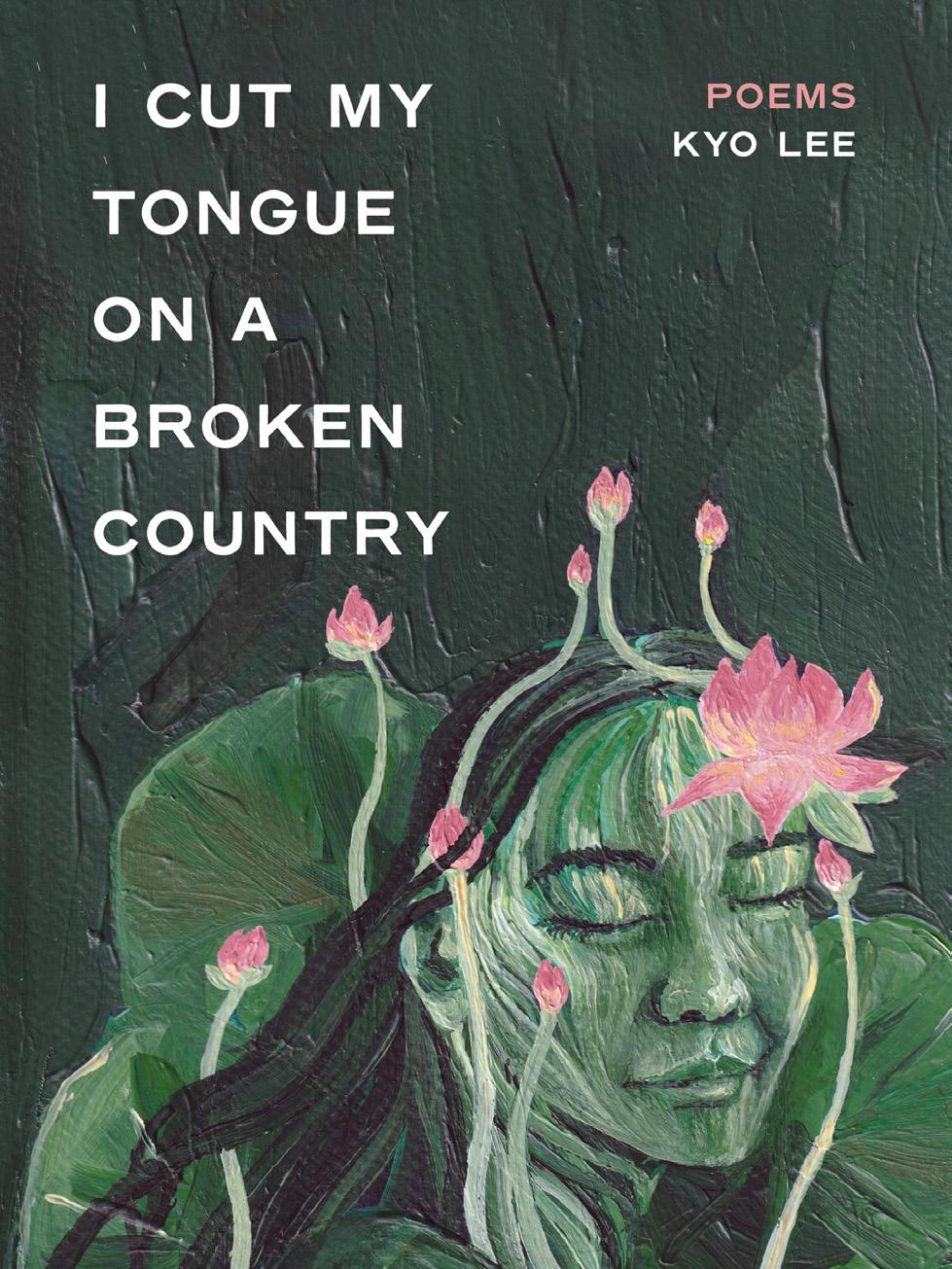
Kyo Lee’s i cut my tongue on a broken country from Arsenal Pulp Press is available at select bookstores across Canada. Visit arsenalpulp.com. You can also learn more at her website, kyolee. me, or Instagram @kyoleewrites. Email her at contact@kyolee.me.
With #BookTok becoming a go-to resource for book discovery, we asked creators on TikTok what novels they wish they could read again for the first time
By Stephan Petar
Is there a book on your shelf you wish you could experience again like it was the first time? You’re not alone. If you search the hashtag #BooksIWishICouldReadForTheFirstTimeAgain – yes it’s a long one – on TikTok, you’ll find hundreds of videos by BookTok creators sharing a piece of literature they would choose.
The BookTok hashtag is centred around a powerful community that has “reignited the publishing industry” and “transformed the way people discover and engage with books,” according to
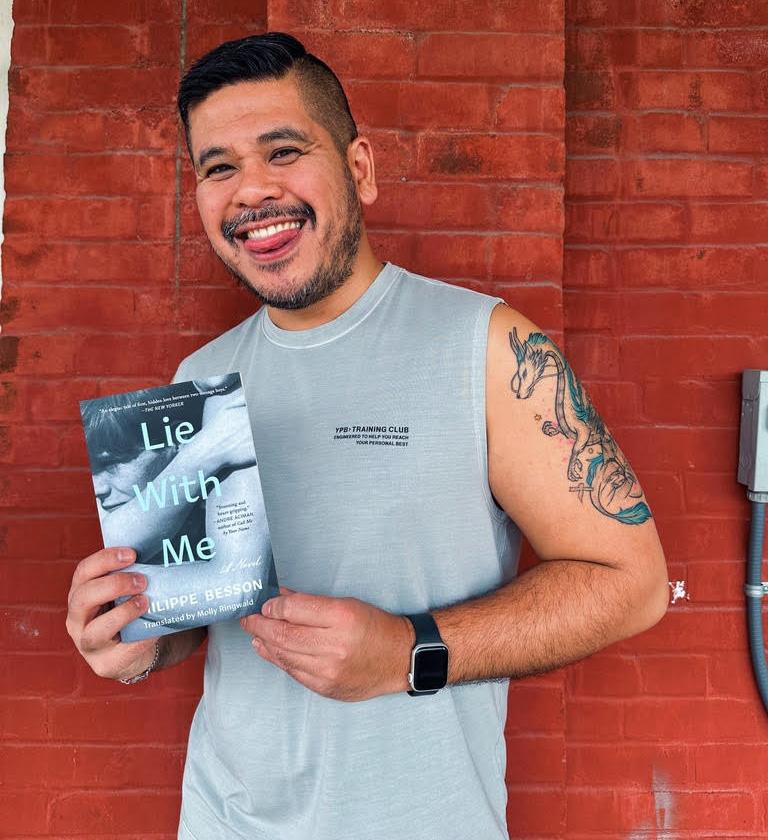
Creator: @JohneePixels7 (he/him)
Location: Ontario
Book: Lie With Me by Philippe Besson
Synopsis: Translated into English by Molly Ringwald – yes, The Breakfast Club and Sixteen Candles star – this story is about Philippe, who comes upon a young man who bears a striking resemblance to his first love. What follows is a look back at the relationship Philippe has never forgotten and a hidden affair with a gorgeous boy named Thomas during their last year of high school. From the creator: “This book transported me to France in the ’80s with descriptions that felt vivid, and emotions that I also absorbed. It’s so beautifully crafted in both its writing and story. Will definitely reread this summer.”
TikTok. With nearly 53 million posts using the hashtag, BookTok has helped people discover brand new titles and up-and-coming authors, and has given older books a new lease on life.
We asked four 2SLGBTQI+ BookTok creators to share the queer books they’d want to experience again for the first time, and why. For the record, mine is Tucker Shaw’s When You Call My Name, a coming-of-age novel about two gay teens in 1990s New York City during the HIV/AIDS crisis.

Creator: @AModelWhosRead (she/her)
Location: British Columbia
Book: A Long Time Dead by Samara Breger
Synopsis: When Poppy wakes up in an unfamiliar home, she discovers she is a vampiress. Confused and with a thirst for blood, she meets Roison, who helps her through her transformation. A
Victorian romance drenched in blood and drama, the novel follows the lengths Poppy and Roison take to secure a love that cannot die. From the creator: “From page one, I knew this was going to be something special. Breger has absolutely gorgeous writing and the depictions of easy, open queer love are just as impactful as the struggles of moving on from old wounds. Poppy’s brash humour balances perfectly with Roisin’s more reserved nature, and the two of them are centre stage in this beautiful story of self-worth, feminine rage, and finding belonging in unexpected places. It shows love can be soft and quiet, or heart-pounding and ruinous. But be warned: this story will lure you in with bawdy jokes and queer vampire shenanigans, then sucker-punch you with haunting depictions of eternal longing. Make sure to have a box of tissues nearby!”

Creator: @GreysLifeLibrary (he/him)
Location: North Dakota
Book: Gender Queer: A Memoir by Maia Kobabe
Synopsis: Kobabe’s (e/em/eir) intensely cathartic autobiography charts eir journey of self-identity, including the mortification and confusion of adolescent crushes, grappling with how to come out to family and society, and facing the trauma and fundamental violation of Pap smears. Gender Queer: A Memoir is more than a personal story: it is a touching guide on gender identity for advocates, friends and humans everywhere. From the creator: “I found a signed copy of this book by chance at a local bookstore a few years ago. I was initially captivated by the cover, but when I read the synopsis, I knew I needed to read it. This book quite literally changed my life. It helped me come to terms with my transness and truly made me feel seen and comfortable enough to be myself. This book has the potential to help so many people understand themselves, their loved ones and
the LGBTQ+ community in general. In a time when the American government is trying to erase the history of trans people, it’s more important than ever to uplift trans voices, whether that’s authors, actors, models, creators, etc. Gender Queer: A Memoir has been on the American Library Association’s ‘challenged books’ list for four years, which shows you its importance. I will forever recommend this book to anyone who will listen.”

Creator: @Bookbinch (he/him)
Location: Quebec
Book: Giovanni’s Room by James Baldwin
Synopsis: A young American expatriate in 1950s Paris finds himself caught between his repressed desires and conventional morality. David has just proposed marriage to his American girlfriend, but while she is away, he becomes involved in an affair with a bartender named Giovanni. The story delves into the mystery of love and tells a deeply moving story that reveals the unspoken complexities of the human heart.
From the creator: “I love Giovanni’s Room more every single time I read it. The first time I got my hands on it was in my first year of college after frantically searching for ‘must-read queer books.’ I carried it all over the place for months and could barely get through it because I was nursing a heartbreak. Little did I know, 17 and freshly dumped was probably when I needed it most. I’d want to read it again for the first time, because now I read it with distance – I’m no longer driven by shame or searching for myself like the characters in the book. Today, I take it in and notice the masterful emotion through lines and narrative arcs. It’s a novel written with exactitude that represents one of the best at his best. I don’t think I’ll ever get tired of Giovanni’s Room, or of James Baldwin, but I do wish I could go back to the version of myself who had a tattered copy stuffed into the skinniest pants he could find. I’d shake him by the shoulders and say, ‘Read it!
Read the book!’”
STEPHAN PETAR is a born and raised Torontonian, known for developing lifestyle,
By Adriana Ermter
It started with a summer plum.
“We sliced it fresh and ran it through our digitization system,” says Alex Wiltschko, a neuroscientist and technologist, and the founder and CEO of Generation by Osmo. “Twenty minutes later, we had it – that exact juicy, tart, plum scent, perfectly reconstituted. Just like taking a picture, emailing the JPEG and printing it out on the other side.”
In that moment, Wiltschko and his team knew they had done something quietly radical: they had digitized a smell. And with that, the world’s first AI-powered fragrance house was born.
Generation by Osmo isn’t just blending perfume: it’s blending science, creativity and data to completely rethink how scent is made. Using proprietary Olfactory Intelligence (OI), the company can turn inspiration – words like peaceful, joy or inspiring, or even images – into fragrance formulas. It helps brands predict what consumers will love, and dramatically speeds up the path from concept to shelf. In a world where most perfumers rely on technical knowledge, artistic vision, slow iteration and a vast understanding of ingredients, this New York City-based company offers a faster blueprint – where machines handle the methodical bits so humans can focus on dreaming.
As for slicing more proverbial plums? “Now we do it hundreds of times a week,” says Wiltschko. “We’re building a library of the world’s scents and teaching AI how to understand them.”
And Wiltschko isn’t alone. He is part of a growing wave of fragrance disruptors rejecting outdated rules that no longer serve people or the planet.
“The fragrance industry has long been clouded in mystery –ingredients hidden, supply chains unchecked,” explains Barb Stegemann, founder of Canada’s The 7 Virtues, a clean, wellness perfume brand based in Halifax. “Now more than ever, consumers want transparency, impact and joy. We’re here to lift that veil, challenge norms and show that business can be a force for good and beauty.”
With their sharper tools, inspired purpose, active causes and cleaner, smarter, more sustainable ingredients, these disruptors are “proving that perfume can be both luxurious and deeply ethical,” affirms Stegemann.
While Generation by Osmo is using AI to reimagine how fragrance is made, other companies – like Touchland, Phlur and LOHN –are rewriting the rules with refillable formats, community-led marketing and purpose at the core. “In a space often driven by surface, we go deeper,” says Stegemann. And all this creative
upheaval is reshaping the scent landscape. From neuroscientists and technologists to ethical entrepreneurs, here are seven of the most exciting brands to watch and spritz now, as they redefine what perfume can be.
1. The AI Alchemist: Generation by Osmo Disrupting with: Artificial intelligence and scent digitization
Founded in 2023, Generation by Osmo focuses on decoding the science of smell. Their mission is to build an AI platform for scent, akin to what natural language processing is for text or computer vision is for images.
The technology is equal parts groundbreaking and lyrical. The platform can read, map and write smells, breaking down scent molecules and using software to generate entirely new fragrances. That’s how they recreated the scent of the plum. But rather than replace perfumers, Wiltschko insists the goal is to support them, “so humans can stay creative.”
Hero scent: Version 01. Soft and mysterious, the eau de parfum smells like the tension between rain on pavement and clean skin. Using AI-assisted blending, it’s a blend of code and chemistry – floral aldehydes, skin musk and mineral ambers rendered with near-machine precision.
2. The Viral Visionary: Phlur
Disrupting with: Digital-first marketing and social media virality
Where most perfume houses whisper, Phlur shouts on TikTok, Instagram and everywhere Gen Z scrolls. Since its 2021 relaunch under beauty entrepreneur Chriselle Lim, Phlur has exploded thanks to an emotionally charged marketing strategy that makes scent deeply personal. Case in point: “Missing Person,” the viral hit rumoured to smell like someone you miss (in a good way, naturally), which is described on the website as, “If nude were a perfume, this is it.” But what really sets the brand apart is how agile, reactive and radically modern it is. Phlur literally listens to its audience. Comments and influencer reactions shape future launches. In a landscape dominated by heritage, Phlur is proving that a start-up can make noses turn.
Hero scent: Missing Person. Notes of skin musk, sheer jasmine and bergamot. The parfum evokes the scent of someone you love and maybe, even, lost.
3. The Eco Activist: St. Rose
Disrupting with: Clean ingredients, environmental justice and regenerative sourcing
From biodegradable sugar-cane alcohol to Indigenous-sourced sandalwood, St. Rose is redefining what ethical luxury can look like. A partner of 1% for the Planet (a global network that inspires businesses and individuals to support environmental solutions), it builds transparency into every layer of its business. Founded in 2019 by Australian-American Belinda Smith, the brand works directly with co-operatives and farmers to ethically obtain ingredients at origin, ensuring not only the integrity and potency of its raw materials, but also providing stable incomes for smallholder producers in Australia and South America and their communities.
“Fragrance has always felt like alchemy to me, a beautiful, transformative force,” says Smith on the brand’s website. “We begin with the finest raw materials in the world: provocative, sensorial, unforgettable.” Every product is compounded, filled and shipped by a team of top-tier perfumers and craftspeople –all within 160 kilometres (100 miles) of St. Rose’s New York City-based creative studio.
Hero scent: Vigilante. Woody, spicy and green. With notes of black pepper, palo santo and orris root, Vigilante is as fierce as its name.
4. The Canadian Minimalist: LOHN
Disrupting with: Local craftsmanship, aesthetic clarity and clean formulations
What began in 2018 with a single candle – crafted and founded in-house in Toronto by Canadians Katerina Juskey and Victoria Mierzwa – has grown into LOHN (Estonian for “scent”). The brand blends clean ingredients with genderless design, offering fine fragrances that reject the synthetic-heavy norms of conventional perfumery. By keeping production local, they ensure hands-on craftsmanship and complete creative control.
Their minimalist aesthetic offers a refreshing alternative to the overdesigned gloss of mainstream scent, while their transparent, clean formulations challenge outdated industry standards. Inspired by rituals, geography and nostalgia, each LOHN scent is a narrative complete with eco-conscious ethos, refillable bottles and ethical sourcing. “We’re inspired by the road less travelled and our scents are designed to remind you of moments in time,” Mierzwa notes on the website.
Hero scent: JURA. Warm, resinous and herbal, with notes of hinoki, frankincense and black tea swirling together like fog on a mountaintop. It’s inspired by pilgrimage and solitude.
5. The Peace Perfumer: The 7 Virtues
Disrupting with: Purpose-driven branding and ethical sourcing from conflict zones
Born from activism, The 7 Virtues is one of Canada’s most inspiring scent stories. Founded in 2010, the brand “uses sustainably sourced essential oils from around the world, supports Days for Girls to help end period poverty and build peace, and we’re proud to be the only B Corp Certified perfume brand at Sephora – a rigorous audit that validates our mission,” notes Stegemann (“B Corp” is a designation confirming that a business is meeting high standards
of verified performance, accountability and transparency). “Our clean, hypoallergenic fragrances are designed to uplift, empower and last.”
Aligned to support human flourishing, each perfume is crafted to be beautiful on the skin and meaningful to the soul. Labels include aromatherapy benefits, while Stegemann’s book, The 7 Virtues of a Philosopher Queen , invites clients to live with intention. “Our mission is to offer more than a product; we offer a tool for personal empowerment.”
Hero scent: Clementine Dream. Citrus, vanilla and wood. It’s “a scent that says: ‘Yes, you can,’” says Stegemann.
6. The Storyteller: Memo Paris
Disrupting with: Unconventional inspiration and global narrative journeys
Founded in 2007 by Clara and John Molloy, Memo Paris follows memories. Each scent is a destination: “Irish Leather” evokes a stormy countryside, while “African Leather” thunders with spice and sun. With raw materials and a nuanced, globe-trotting perspective, Memo disrupts by bringing the world closer together, one bottle at a time.
Their rebellion lies in romanticism – storytelling in a world obsessed with algorithms. Memo doesn’t just use locations as mood boards, but builds full sensory narratives where scent, packaging and branding collide to evoke a specific journey. Each fragrance is like a chapter in a travel diary, often tied to a real experience. This immersive, literary approach sets the company apart in a market that often relies on surface-level escapism. After all, as the motto on their website clearly reads, “The journey is the destination.”
Hero scent: African Leather. Coriander, saffron, cardamom, leather. Animalic and addictive, it’s a fragrance with a passport.
7. The Scented Trailblazer: Touchland Disrupting with: High-design hygiene and Gen Z cult appeal
Where hand sanitizers were once a necessity, Touchland turned them into an accessory. Founded by Andrea Lisbona and relaunched in the US in 2018, the brand disrupted personal care by blending sleek, award-winning design with skincare-forward formulas and Instagram-ready aesthetics. Its signature Power Mist hand sanitizer, housed in a colourful, credit card-sized spray, went viral during the COVID-19 pandemic and hasn’t left the spotlight since.
But Touchland is more than just a pretty package. With its fastdrying, non-sticky, skincare-oriented formula, the brand delivers on both form and function. And as the website says, “everyday essentials should be exciting; little bursts of joy that can delight our senses and remind us of the magic in the mundane.” With a new lineup of Power Essence body/hair fragrances, Touchland has carved out a category of its own: luxury, hygienic scents.
Hero scent: Power Mist Hydrating Hand Sanitizer. Available in scents like “Vanilla Blossom” and “Rainwater.”
Cody Rigsby is more than the sassy Peloton personality you know and love – he’s a gay Trojan horse and a queer advocate
By Karen Kwan
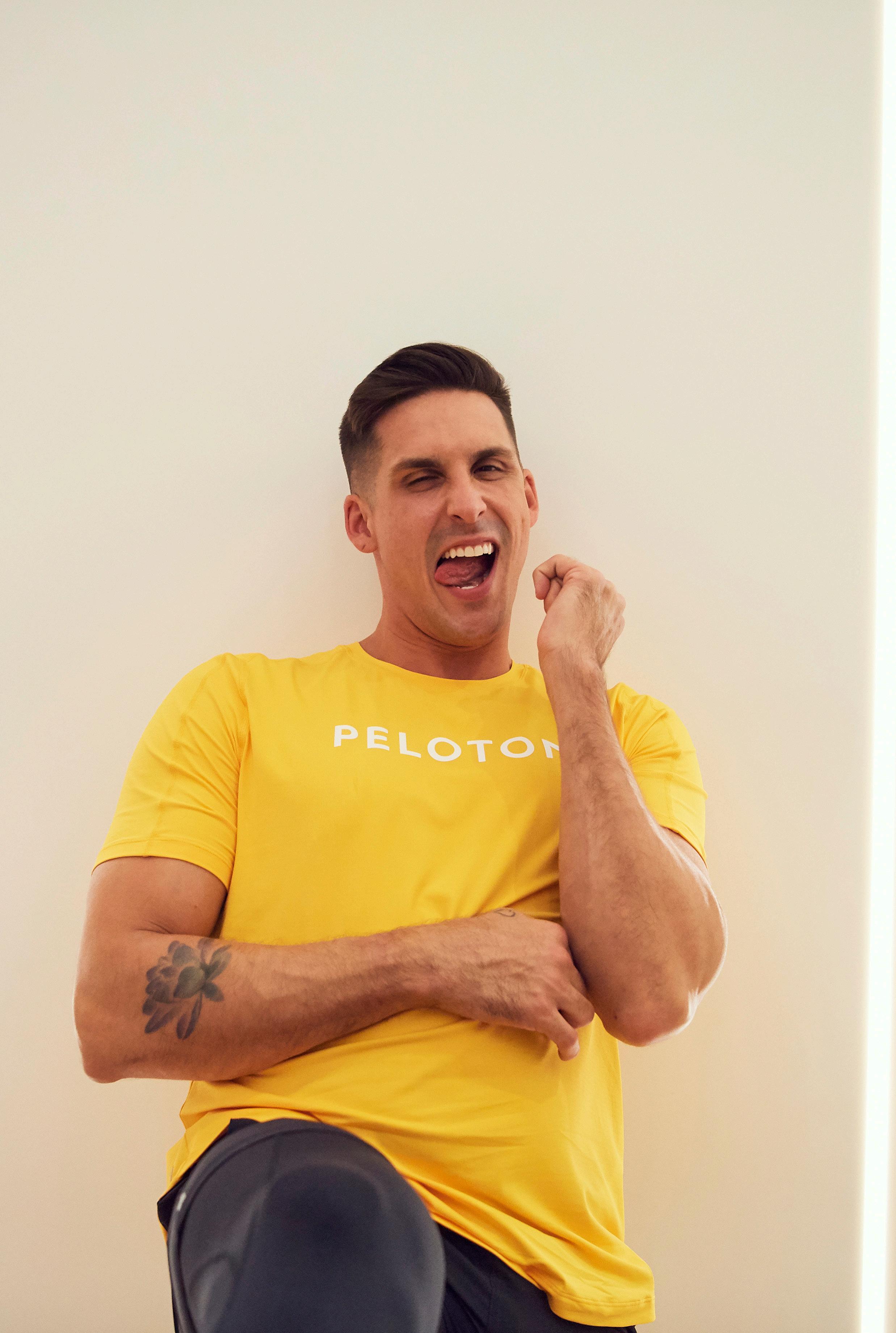
It can be difficult to think of good things having come out of the pandemic, but the explosion in the popularity of Peloton – with one of its top instructors, Cody Rigsby, becoming a household name – is perhaps one bright note that emerged during those difficult days. Thousands of members worldwide take his classes on the digital platform, and Rigsby quickly, and perhaps unexpectedly, became everyone’s virtual gay best friend.
Even Rigsby has referred to himself as a bit of a Trojan horse. “When people come to the studio and share their stories, or I randomly meet someone on the street and they talk about how Peloton and my queerness has affected them in a positive way, it’s something I’m proud of,” he says. He’s had many people attend his classes who have admitted that taking his classes and being exposed to the LGBTQ+ lifestyle through him has changed how they feel about gay people. Rigsby recalls one mom attending one of his Pride rides, who shared with him after class that her child is trans, and that taking Rigsby’s classes had helped to both open up her mind about her child’s identity and to develop a deeper relationship with them.
Showing the LGBTQ+ lifestyle in a different light (one that some Peloton members have perhaps never seen before) is something Rigsby takes to heart. A long-time advocate for queer rights, he doesn’t allow himself to forget that the gay rights movement started not long before he was born. “There are so many rights we have now – and even just queer presence in society being accepted – that are the norm because so many people fought hard for these rights,” he says. He maintains a deep respect for continuing the legacy of the great queer people before him and is curious as to how things will play out, but is hopeful thanks to the community of allies who are tapping into their own strength and resilience. “We have made it through a lot, and we will make it through this,” he says.
Rigsby is, of course, more than just everyone’s virtual GBF that they listen to (he has a weekly podcast, Tactful Pettiness with Cody Rigsby and Andrew Chappelle) or take Peloton rides with… as we learned when we first interviewed him for IN Magazine’s January/February 2021 issue as he was about to capture the world’s attention (“Meet Peloton Instructor Extraordinaire Cody Rigsby”: https://inmagazine.ca/2021/01/meet-peloton-instructorextraordinaire-cody-rigsby/). So, what does the 37-year-old selfproclaimed “big bitch” do during his downtime, how does he maintain his muscular build, and is he as savagely sassy in real life as he is in his classes? We sat down with the North Carolina native to find out.
We have to ask: outside of teaching, how do you personally stay so fit?
I teach probably three to five classes a week over a span of four days. [For my workouts], I try to do an hour of strength training three to five days a week. And I try to give myself at least one day off a week where I’m doing nothing. In the summer, I’ll ride a bike outside, weather permitting and if I’m not exhausted. I think it’s good for us to find movement that doesn’t feel so prescriptive, but also feels a little bit more playful: riding a bike outside or hiking is that for me.
And what would you say you do for self-care?
I feel like as a society, we’ve kind of conflated self-care with mental health. I think that self-care can be something that helps your mental health, but I don’t think it is the solution to a whole strong, fundamental mental space. And for me, this has been a big shift: I’ve been waking up earlier every morning, around like 5:30 or 6, which is unlike me. I made this shift in September, and I’ve stuck with it because I felt like when I was turning my day later, I was just rushing into things and didn’t have time to make my coffee or always eat a great breakfast or journal – to have mornings for myself to be more internal.
I also love a very long shower at night. You wash from head to toe, get out, put lotion on your body and all the serums on your face and have a good time with that. And when I’m done with a shower, instead of turning on the TV I’ll kind of just lie in bed with my thoughts. I know that sounds weird, but I don’t think we allow ourselves to just think and just be with everything that’s coming up. Not even like meditation. But just like letting it all come up and exploring it a little bit.
Now that you’re in your late 30s, has your routine changed at all?
Absolutely. I think one of the beautiful things about getting older is you’re way more disciplined. You also don’t have a capacity or tolerance for not getting sleep or not eating – they just become so much of a priority – so I’ve definitely felt that shift. As much as I am a rambunctious party girl, I’m not as big of a party girl as I was. So, I try to only go out once a month.


And how do you feel about aging?
Sorry to everybody that peaked in high school, but I have yet to peak even at 37. Apologies to everybody else, but I have yet to peak. I just keep getting better. You know, you’ve got more money, more stability, you know more about yourself, and habits and routines become more important. Your circle of friends has gotten smaller, which I don’t think is bad – you’re prioritizing intimate deep connection with the people you love. And I’m excited; I think wisdom is so powerful, and I think you just get more of it as you age, especially when it comes to giving time to yourself, knowing where your boundaries are, holding those boundaries and loving yourself. These things just get deeper and richer as you have the privilege to live on earth longer and longer.
When it comes to your public versus private persona, is there anything people would be surprised by?
I think that anybody who’s on camera, whether that be on TikTok or the Peloton platform, your public persona is kind of this hyperbolic version of yourself: you take these really authentic things about yourself or versions of yourself, and you kind of amplify them for the entertainment factor, and I think that’s across the board. I know, some might call it fake, but I just think it is you performing these real parts of yourself. For me, with so much outward energy, it can be in a way depleting, and so I think people would be really surprised how much I value quiet time – not always talking, and having spaces where I can just disconnect.
How do you feel about being a role model?
Whoever I’m a role model for needs to aim higher! But I appreciate it. I think it just comes back to thinking of my inner child and living in a time when there wasn’t a lot of queer representation. It’s important for me that maybe there’s a child of a member who’s seeing their parent do amazing things or creating a positive relationship with someone who’s queer, and through that has the strength to be themselves. So that’s the thing I value most when it comes to being a ‘role model.’
Who would you say is one of your role models?
My mind always goes to RuPaul creating this incredible empire from an art form that has also given a lot of opportunity to a lot of other people, and I think that’s inspiring. And it’s not a person, but being in New York, I’m always inspired by the energy of the city like this – the strangers in the street, their fashion, their sense of drive and work ethic. I just really thrive in spaces like that.
You have this sense of resilience – where does that come from?
Sometimes you just don’t have a choice. I think even from a young age, going through a lot of stuff, the choice was I could sit there and let it have a really negative impact on me, or I could use it as fuel and inspiration to find and create a different path for myself that my mom wasn’t able to give me. And I’m grateful for those trials because they allowed me to be a fierce adult. I’m always looking at my life and I’m so grateful because I never thought that this is where I would be: being successful, having an impact on people, having purpose in life – great things that not everybody has the privilege to have.







During Pride Month, it’s especially important to remember trailblazers like Marsha P. Johnson, a trans icon and one of the most prominent figures of the gay rights movement of the 1960s and 1970s in New York City
By Christopher Turner
In the annals of LGBTQ+ history, few figures shine as brightly – or as defiantly – as the late Marsha P. Johnson. A fearless trans activist, self-identified drag queen and self-described “street queen,” Johnson was a fixture of street life in New York City’s Greenwich Village for nearly three decades, a pivotal force in the gay liberation movement of the late 1960s, a protector of marginalized youth, and a symbol of unapologetic self-expression. Her legacy, though long overshadowed, has come to be recognized as foundational to the fight for 2SLGBTQI+ rights.
Today, historians and friends of Johnson describe her as a trans woman. The term transgender was not in wide use in Johnson’s lifetime; she usually used she/her pronouns for herself, but also referred to herself as gay, as a transvestite or simply as a drag queen.
Johnson played a pivotal role in the historic 1969 Stonewall Riots – protests in response to the ongoing police raids of gay bars in New York City that are widely credited as sparking the modern-day 2SLGBTQI+ rights movement.
“At the forefront of the riots and the early movement were transgender and gender-nonconforming women of color, like Marsha P. Johnson, Sylvia Rivera and Miss Major Griffin-Gracy,” the Lawyers’ Committee for Civil Rights Under Law wrote in a 2019 article for the 50th anniversary of the Stonewall Riots.
As we face an era of backlash against increasing affirmation and acceptance of 2SLGBTQI+ identities, it’s more important than ever to understand, learn about and share queer history, which has historically often been overlooked. In February 2025, following US President Donald Trump’s executive order, the US National Park Service removed the “T” from the “LGBTQ+” acronym and also removed all references to transgender people from the official Stonewall National Monument website and other government websites.
While the Trump administration attempts to erase transgender people from history south of the border, it’s important to remember that Stonewall’s history is not only part of queer history, it is undeniably tied to transgender history. Johnson and countless other trans and gender-nonconforming individuals fought bravely, and often at great personal risk, to push back against oppressive systems both before and after the riots.
But who was Marsha P. Johnson beyond the protests and headlines? What was it about her that made her such an enduring figure of resistance and love? This is the story of a woman who stood at the front lines of queer history, armed with flowers in her hair and an unbreakable spirit.
From Elizabeth, New Jersey, to the streets of New York Marsha P. Johnson was born Malcolm Michaels Jr. on August 24, 1945, in Elizabeth, New Jersey. Her father, Malcolm Michaels Sr., worked on the assembly line at a General Motors factory in Linden, and her mother, Alberta (née Claiborne) Michaels, was a housekeeper. Johnson was raised in an extremely religious household alongside six siblings, and the family attended Mount Teman African Methodist Episcopal Church. Johnson practised her Christian faith throughout her life; later, she was drawn to
Catholicism and also frequently visited houses of worship of other faiths. Commenting on this upbringing, Johnson once said, “I got married to Jesus Christ when I was 16 years old, still in high school.” According to her nephew, Johnson always maintained a close but fraught relationship with her family back in New Jersey.
From an early age, Johnson knew they were different. Johnson first began wearing dresses at the age of five, but stopped temporarily because of harassment from boys who lived nearby and the rigid gender norms of the time that encouraged men to suppress any expressions of femininity.
Despite these restrictions, Johnson found ways to explore her identity. She later recalled being bullied as a child and feeling alienated from her community. However, she also spoke fondly of finding small moments of joy in her youth, such as playing with dolls and finding solace in faith.
In an interview conducted with Johnson on June 26, 1992, she revealed that she had been a victim of sexual assault at a young age by another boy, who was around 13. After this, Johnson described the idea of being gay as “some sort of dream,” rather than something that seemed possible, and so chose to remain sexually inactive until she left New Jersey for New York City at the age of 17.
In December 1962, Johnson entered the United States Navy under her birth name and stayed for six months; during that time, she earned a GED from Thomas A. Edison High School in Elizabeth. After her honourable discharge in June 1963, Johnson promptly packed a bag with little more than a few belongings and took a leap of faith: she moved to New York City, a place that would allow her to embrace her true self. She later recalled that she left New Jersey with $15 and a bag of clothes.
Upon arrival in Greenwich Village, commonly known as “the Village” to New Yorkers, Johnson alternated between going by her given name, Malcolm, and a persona she had created: Black Marsha. However, life in New York was not easy. Initially Johnson began waiting tables in Greenwich Village, but soon began spending time with street hustlers near the Howard Johnson’s restaurant at Sixth Avenue and Eighth Street. Like many LGBTQ+ youth living in the city at the time, Johnson faced homelessness, discrimination and police brutality. Johnson did not have a permanent home during this time, and bounced around sleeping at friends’ homes, hotels, restaurants and movie theatres. She often relied on the kindness of friends and strangers to survive.
Not long after moving to New York, then 17-year-old Johnson met 11-year-old Sylvia Rivera, a Puerto Rican transgender girl, and the two became instant friends. Rivera later said of Johnson, “She was like a mother to me.” As Johnson had done for herself, she encouraged Rivera to love herself and her identity.
Johnson engaged in prostitution and was often arrested – she stopped counting after the 100th time, she later said – and was once, in the late 1970s, even shot. She could often be found in seedy hotels near Times Square, including the Dixie Hotel (now the Hotel Carter) on West 43rd Street.
“The ones that used to make the most money were the boys that could wear their own hair, with just a little bit of makeup,” she later recalled.
Johnson eventually fully embraced her gender-nonconforming identity and adopted the name that would make her famous throughout the city: Marsha P. Johnson. Initially she said that the “P” stood for “Piola,” but she quickly changed that to “Pay It No Mind,” a phrase she often used to dismiss nosy questions about her gender and identity. Johnson even said the phrase once to a judge, who was amused by it, leading to Johnson’s release. The surname came from a Howard Johnson’s restaurant where she liked to hang out.
Johnson’s flamboyant, colourful outfits, often adorned with flowers, and her radiant personality made her a beloved figure in the Village. Within a few years she became a fixture at the Stonewall Inn, a gay bar on Christopher Street that mostly catered to gay men, where she socialized, performed and found solidarity among other queer individuals.
“My life has been built around sex and gay liberation, being a drag queen,” Johnson said.
The Stonewall Uprising: A moment of defiance
Although New York State downgraded sodomy from a felony to a misdemeanour in 1950, living openly outside the sexual mainstream often meant a difficult life, because persecution of gay people and criminalization of their activities were still common. Same-sex dancing in public was prohibited. The State Liquor Authority banned bars from serving alcoholic beverages to gay people. People could be charged with sexual deviancy for cross-dressing. Police enforcement was often arbitrary.
Early on the morning of June 28, 1969, the mafia-run gay bar Stonewall Inn was raided by the police – a common occurrence at the time. But this time, instead of complying, the bar’s patrons fought back. The riots reportedly started at around 1:20 am, after butch lesbian Stormé DeLarverie fought back against a police officer who attempted to arrest her. This is confirmed by police reports and eyewitnesses.
While the first two nights of rioting were the most intense, the clashes with police would result in a series of spontaneous demonstrations and marches through Greenwich Village for roughly a week afterwards, and Johnson was there every single night.
Numerous legends have grown around the event – usually characterized as a riot, but more recently described as a rebellion or uprising – but the evidence acknowledges that Johnson was among the “vanguard” of those who resisted the police, according to David Carter, the author of the 2004 book Stonewall: The Riots That Sparked the Gay Revolution . Johnson was 23 at the time. A number of Stonewall veterans interviewed by Carter named Johnson, along with Zazu Nova and Jackie Hormona, as “three individuals known to have been in the vanguard” of the pushback against the police at the uprising.
Throughout the years, Johnson gave conflicting recollections of the events that night. In 1987, she recalled arriving at around “2:00 [that morning],” saying that “the riots had already started” by that time and that the Stonewall building had already been set on fire by police.
While there are differing accounts of who actually threw the first brick during the riot, most agree that Johnson was a leader in the resistance. According to witnesses, she was among the first to take action, shouting, throwing objects and encouraging others to fight back. On the second night of the riot, Johnson climbed up a lamppost and dropped a heavy bag onto a police car, shattering the windshield. Some accounts claim that she also threw a shot glass at a mirror, an act now known as “the shot glass heard around the world.”
What is undeniable to any critic who questions the Stonewall event is that Johnson was a well-documented key figure in the disturbances immediately following the police raid at the Stonewall Inn, and her presence and leadership in the following days cemented her as a key figure in the movement.
A radical force for change
Stonewall helped to galvanize a more assertive, even militant, gay-rights movement in New York City, and ultimately prompted the first Gay Pride parades, which took place in some cities across North America in 1970.
On the first anniversary of the Stonewall uprising, on June 28, 1970, Johnson marched in the first Gay Pride rally, then called the Christopher Street Liberation Day.
After Stonewall, Johnson was quick to join gay rights organizations that formed, and became one of the most visible activists in the fight for LGBTQ+ rights. However, the movement began to silo trans people of colour and their issues as it focused on cisgender members of the community. Johnson knew trans people need support, too, so she got to work. Along with Rivera, she cofounded the Street Transvestite Action Revolutionaries, or STAR, in 1970 to advocate for young transgender people. STAR for a time provided shelter, food, clothing and support for homeless transgender and gender-nonconforming youth – many of whom had been rejected by their families and had nowhere else to go.
The pair also set up STAR House, one of the first known shelters for LGBTQ+ youth. The first STAR House was in the back of an abandoned truck in Greenwich Village. Nearly 24 young people called the truck home until one morning, Johnson and Rivera witnessed the truck driving away with STAR residents still sleeping inside – apparently, the truck was not abandoned after all. As they watched their “kids” jump from a moving truck, the pair realized that they needed to create a real home. Johnson and Rivera rented a dilapidated building with no electricity or running water, which they tried to fix up. Johnson and Rivera used their own money – often earned through sex work – to fund food and rent for those living in the shelter. STAR House was of personal importance to Johnson and Rivera, as they had both spent much of their youth experiencing homelessness and destitution. The pair covered off the rent for eight months; when they could no

longer pay, they were all evicted. But the impact of STAR had already been felt by many.
STAR grew out of the Gay Liberation Front, which advocated for sexual liberation and pushed to align gay rights with other social movements. At a time when even mainstream gay rights groups were reluctant to embrace transgender activism, Johnson and Rivera pushed for full inclusion. They fought tirelessly for housing rights, legal protections and healthcare access for transgender people. Their efforts laid the groundwork for much of today’s trans activism.
After STAR disbanded, Johnson continued speaking out for LGBTQ rights and was steadfast in her commitment to helping homeless transgender youth.
Her goal, she declared in an interview for a 1972 book, was “to see gay people liberated and free and to have equal rights that other people have in America,” with her “gay brothers and sisters out of jail and on the streets again.” She added, in a reference to the radical politics of the time, “We believe in picking up the gun, starting a revolution if necessary.”
In 1973, Johnson and Rivera were banned from participating in the New York Gay Pride parade by the gay and lesbian committee administering the event, who stated that they “weren’t gonna allow drag queens” at their marches, claiming they were “giving them a bad name.” Johnson and Rivera’s response? They marched defiantly ahead of the parade.
Johnson was also a prominent member of the Gay Liberation Front (GLF) and frequently participated in demonstrations, marches and sit-ins. She was an outspoken advocate for AIDS awareness, particularly as the epidemic ravaged the LGBTQ+ community in the 1980s. She joined ACT UP (AIDS Coalition To Unleash Power), demanding better medical treatment and visibility for those living with HIV/AIDS.
During a gay rights rally at New York City Hall in the early ’70s, photographed by Diana Davies, a reporter asked Johnson why the group was demonstrating, Johnson shouted into the microphone, “Darling, I want my gay rights now!”
During another incident around this time, Johnson was confronted by police officers for hustling in New York. When the officers attempted to perform an arrest, Johnson hit them with a handbag that contained two bricks. Asked by the judge for an explanation for hustling, Johnson claimed to be trying to secure enough money for a tombstone for her husband (his name was Cantrell, according to Rivera) – during a time when same-sex marriage was illegal in the United States. When the judge asked what had happened to “this alleged husband,” Johnson responded, “Pig shot him.” Initially sentenced to 90 days in prison for the assault, Johnson’s lawyer eventually convinced the judge that Bellevue Hospital would be more suitable.
The 1970s were a time of greater visibility for Johnson not only for her endless activism, but for her appearance. Her outfits – red
plastic high heels, slippers and stockings, shimmering robes and dresses, costume jewellery, bright wigs, plastic flowers and even artificial fruit in her hair – were often assembled from scavenged or discarded materials.
In 1970, Johnson gave an interview to radio station WBAI, where she stated that she was undergoing feminizing hormone therapy with the goal of eventually getting gender surgery.
“I was no one, nobody, from Nowheresville, until I became a drag queen,” she said in a 1992 interview.
Among those who noticed was Andy Warhol, an influential celebrity in his own right, and a key fixture in New York’s fashion and avant-garde art scene in the 1960s and 1970s. Warhol took Polaroids of Johnson and included her in Ladies and Gentlemen, a 1975 portfolio of 10 screenprints depicting gender-ambiguous drag queens and transgender revellers that was first displayed at The Gilded Grape, a nightclub on Manhattan’s Eighth Avenue. It was a popular hangout for New York’s Black and Latinx trans women and drag queens, and was close to Warhol’s studio, known as The Factory. Johnson is the most famous subject in the Ladies and Gentlemen series; in fact, many in the series remained unlabelled and anonymous for decades. It took researchers years to uncover their names and identities, until finally in 2014 the Warhol Foundation published an official list of all those featured in the Ladies and Gentlemen paintings.
Johnson also gained a small amount of fame as part of the drag performance group Hot Peaches, a legendary drag theatre troupe that celebrated LGBTQ+ culture and resistance and began performing in 1972.
Despite her connection to Warhol, her performances and her fierce activism, Johnson lived much of her life on the margins. She struggled with mental health issues, including schizophrenia, and was often homeless. She had the first in what she said was a series of breakdowns in 1970, the year after the Stonewall Riots, and was in and out of psychiatric institutions after that.
“I may be crazy, but that don’t make me wrong,” she reportedly often said.
She also faced regular harassment from both the police and members of her own community. Through it all, she never lost her kindness or her sense of humour. But, although generally remembered as generous and warm-hearted, Johnson did have an angry, violent side that could sometimes emerge when she was depressed or under severe stress.
“She would wander, start off talking about one thing and end up miles away; people would say that drugs had ruined her mind, that she was a permanent space cadet,” the historian and author Martin Duberman wrote in the 1993 book Stonewall, adding that Johnson’s mind had “concentrated wonderfully” when she was organizing STAR.
She became a fixture at the Christopher Street Piers, a gathering place for queer youth, and was known for her generosity – giving
away her last dollar to someone in need, sharing food and offering words of encouragement.
In 1980, a pivotal year for Johnson, she was invited to ride in the lead car of New York’s annual Gay Pride Parade, and began living at the home of a close friend, the gay activist Randy Wicker. When Wicker’s lover, David, became terminally ill with AIDS, Johnson became his caregiver until he died of AIDS in 1990. After his death, and the death of other friends with the virus, Johnson became committed to sitting with the sick and dying, as well as doing street activism with AIDS activist groups, attending protests by and meetings of ACT UP, the AIDS advocacy organization.
Johnson remained devoutly religious in later life, grieving for friends. She could sometimes be found prostrate before a statue of the Virgin Mary at the Catholic Community of Saints Peter and Paul in Hoboken, New Jersey. She was often also seen lighting candles and praying at St. Mary’s Catholic Church in Hoboken, which was renamed Our Lady of Grace in 2008.
In 1992, George Segal’s sculpture, Gay Liberation, was moved to Christopher Park as part of the new Gay Liberation Monument. Johnson famously commented, “How many people have died for these two little statues to be put in the park to recognize gay people? How many years does it take for people to see that we’re all brothers and sisters and human beings in the human race? I mean how many years does it take for people to see that we’re all in this rat race together?”
In a June 26, 1992, interview, Johnson said she had been HIVpositive for two years. “They call me a legend in my own time, because there were so many queens gone that I’m one of the few queens left from the ’70s and the ’80s,” she said.
Several days later, she was seen for the last time.
The mysterious death of a revolutionary Days after New York’s 1992 Gay Pride parade, on July 6, 1992, Johnson’s body was found floating in the Hudson River near the Christopher Street Piers. She was 46. The police quickly ruled it a suicide, despite suspicious circumstances and witness reports of harassment. Johnson’s friends and other members of the local community acknowledge that while Johnson did struggle mentally, she was not suicidal, and many believed she had been murdered, noting that the back of Johnson’s head had a massive wound. But her case was largely ignored by authorities at the time.
Johnson’s death occurred during a time when anti-gay violence was at a peak in New York City, including bias crime by police. In fact, 1992 was the worst year on record up to that point for anti-LGBTQ violence, according to the New York Anti-Violence Project. Johnson was one of the activists who had been drawing attention to the issue, participating in marches and other activism to demand justice for victims, and for an inquiry into how to stop the violence.
Johnson’s body was cremated, and a funeral was held at a local church in Greenwich Village on July 26, 1992. Hundreds of people showed up at the church for her funeral; it was so crowded that
people stood on the street. Following the funeral, there was a march down Seventh Avenue, and then friends released Johnson’s ashes over the Hudson River, off the Christopher Street Piers. Police allowed Seventh Avenue to be closed while Johnson’s ashes were carried to the river. After the funeral, a series of demonstrations and marches to the police precinct took place, to demand justice for Johnson.
For years, activists fought to reopen the investigation. Finally, in December 2002, a police investigation resulted in reclassification of Johnson’s cause of death from “suicide” to “undetermined.” Then in November 2012, activist Mariah Lopez succeeded in getting the police to reopen the case as a possible homicide.
In 2016, Victoria Cruz of the Anti-Violence Project also tried to get Johnson’s case reopened, and succeeded in gaining access to previously unreleased documents and witness statements. Cruz sought out new interviews with witnesses, friends, other activists and police who had worked the case or had been on the force at the time of Johnson’s death. Some of her work to find justice for Johnson was filmed by David France for the 2017 documentary The Death and Life of Marsha P. Johnson, which streamed on Netflix.
Today, justice for Marsha P. Johnson remains elusive. Her death remains a painful reminder of the violence faced by Black transgender women – a crisis that sadly persists today.
Marsha P. Johnson’s legacy
Johnson’s whole life seemed to be a balance between popularity and exclusion. Throughout Greenwich Village, she was known as “Saint Marsha,” and she had a reputation for being generous and kind. But despite her popularity, Johnson also lived a life of poverty and danger.
Today, Marsha P. Johnson is rightfully recognized as a pioneer of 2SLGBTQI+ rights. Her name has been reclaimed by activists, scholars and artists, who celebrate her contributions not only to the Stonewall Riots but to the queer liberation movement and advances around the globe. There are books, movies and documentaries telling her story, as well as murals and plaques bearing her name that can be spotted in gay villages worldwide. In New York City, a bronze sculpture with holes to insert flowers, known as A Love Letter to Marsha by American artist Jesse Palotta, notably became the first statue of a transgender individual in New York City when it was erected in Christopher Park along Christopher Street in the West Village section in 2021.
Then there’s the Marsha P. Johnson Institute, founded in 2019, which continues her work by advocating for Black transgender people, providing resources and fighting against systemic discrimination – something she spent her entire life fighting for.
“As long as gay people don’t have their rights all across America,” she once said, “there’s no reason for celebration.”
She may have lived on society’s margins, but her impact is at the centre of history. Marsha P. Johnson didn’t just fight for trans rights – she fought for love, community and a world where everyone could live without fear.

Not hiding who they were was just the first thing they did to inspire progress…
“Changing the world” is no easy feat. It means connecting with people in a way that few of us are capable of, and doing it on an enormous scale. These days, social media make “going viral” seem like a piece of cake, because people can share their opinion with a click. A cause can spread like wildfire across the country – and the world – thanks to hashtags, vloggers with millions of followers, and a 24/7 news cycle that never sleeps.
But what was it like before social media? Who were the trailblazing queer figures who were able to effect monumental changes for the LGBTQ+ community without the help of that digital megaphone? Now more than ever, it’s important to remember some of the iconic LGBTQ+ people who have done so much not only for their community but for the world as a whole.
Here are just a few of the LGBTQ+ individuals who have made history for their contributions.
(August 28, 1825–July 14, 1895)
German writer Karl Heinrich Ulrichs grew up in the mid-1800s preferring to wear dresses and feeling like he’d much rather be a girl. In 1862, when he was 37, he told his family and friends that he was an “urning,” which he described as “a female psyche in a male body who is sexually attracted to men.” He began writing
under a pseudonym, coining a number of terms to describe different sexual orientations. He eventually started using his real name, which is considered to be the first public “coming out” in modern society. Ulrichs was also the first homosexual to speak out against anti-homosexual laws. He is now considered an icon and pioneer, even being called the “first gay man in world history.”
(October 16, 1854–November 30, 1900)
An Irish poet and playwright, Oscar Wilde is known for his play The Importance of Being Earnest, for his novel The Picture of Dorian Gray – and for the persecution he faced for being gay. In 1895, Wilde sued the father of his lover for libel, but the lawsuit backfired on him and he ended up being charged with “gross indecency” –or homosexuality – and was sentenced to two years’ hard labour. During his trial and in his writing, Wilde eloquently defended his right to his sexuality. He believed in the right to be yourself, writing, “To regret one’s own experiences is to arrest one’s own development. To deny one’s own experiences is to put a lie into the lips of one’s own life. It is no less than a denial of the soul.”
(May 14, 1868–May 14, 1935)
A physician and sexologist from Germany, Magnus Hirschfeld was also an outspoken advocate for sexual minorities. He founded the
Scientific Humanitarian Committee, which has since been credited with having carried out the “first advocacy for homosexual and transgender rights.” His 1914 book The Homosexuality of Men and Women attempted to prove that homosexuality existed all over the world regardless of culture and upbringing. Hirschfeld, who was gay himself, believed that proving the existence of highranking gay officials would help legitimize homosexuality. He even testified in a high-profile trial that “homosexuality was part of the plan of nature and creation just like normal love.” During a tour of the US in 1931, Hirschfeld developed a system where he categorized 64 possible types of sexual orientations, which today might be similar to what we consider the “spectrum.”
(March 17, 1912–August 24, 1987)
Bayard Rustin was an American civil rights activist who was an adviser to Martin Luther King, Jr., and the main organizer of the March on Washington in 1963, where King gave his historic “I Have A Dream” speech. In 1953, Rustin was arrested for a homosexual act, which led to public attacks on him by some civil-rights leaders and political opponents who claimed he was immoral, which forced him to end his association with King. Prior to his death, he became more vocal about his sexuality and refocused his attention towards gay rights. In a 1987 interview with Village Voice , he said, “I think the gay community has a moral obligation…to do whatever is possible to encourage more and more gays to come out of the closet.”
(June 23, 1912–June 7, 1954)
British mathematician, logician and cryptographer Alan Turing was responsible for breaking the Nazi Enigma code during World War II, and ultimately his work gave the Allies the edge they needed to win the war in Europe. It also led to the creation of the computer. It is widely said that Turing took his own life on June 7, 1954, two years after being outed as gay. At the time, it was reported that he had died from eating an apple laced with cyanide. He was only 41 years old.
(August 2, 1924–December 1, 1987)
James Baldwin was an essayist, novelist and playwright whose eloquence and passion on the subject of race in America made him one of the most important literary voices of the 20th century. He was not just a writer of exceptionally clear and psychologically penetrating prose: he was also a civil rights activist who addressed race relations with deft complexity and incisive anger. Years before the gay liberation movement, he was also one of the first Black writers to include queer themes in fiction, most notably in Giovanni’s Room (1956), where he wrote with a frankness that was highly controversial at the time. The critically acclaimed work explores the internal struggles of sexuality and the complex representations of homosexuality and bisexuality by following the thoughts and actions of David, an American living in a bohemian neighbourhood of Paris in the 1950s. The book caused great controversy when it was first published, due to its explicit content.
(May 30, 1926–May 3, 1989)
Although she wasn’t the first in the world, Christine Jorgensen was the first person to become widely known for having sex reassignment surgery. After serving in the US Army during World War II, she heard about sex reassignment surgery and travelled to Europe to seek out the operations for herself. Her transition was the subject of a New York Daily News feature story, and she used her newfound platform to become an advocate for transgender people. Her openness helped bring attention to gender identity, and influenced other transgender people to change their names and the sex on their birth certificates. She sparked the notion that gender was not a set binary and inspired more discussion around gender norms.
(May 22, 1930–November 27, 1978)
As the first openly gay elected official in the history of California, Harvey Milk made history when he was elected to the San Francisco Board of Supervisors as a city supervisor in 1978. His speeches were high energy and flamboyant, which attracted a lot of media attention and support from San Francisco’s gay community. Milk served as a city official for only 11 months before he was assassinated, along with the mayor of San Francisco, by a former co-worker. He has since been called “the most famous and most significantly open LGBT official ever elected in the United States” and was posthumously awarded the Presidential Medal of Freedom in 2009.
(July 31, 1932–February 18, 2007)
Barbara Gittings was a prominent American activist for LGBT equality from the 1950s until her death in 2007. She brought attention to a wide range of different causes that affected the LGBT community, from picketing against the US government’s ban on the employment of gay people to fighting to get the American Psychiatric Association to drop homosexuality as a mental illness. Because of her devotion to promoting positive literature about homosexuality in libraries, the American Library Association created the Barbara Gittings Award, an annual award for the best gay or lesbian novel. As well, GLAAD named an activist award after her.
(July 2, 1951–February 19, 2002)
Sylvia Rivera was one of the most radical gay and transgender activists of the 1960s and ’70s. Rivera, who identified as a drag queen for most of her life and later as a transgender person, fought against the exclusion of transgender people, especially transgender people of colour, from the larger movement for gay rights. She was close friends with Marsha P. Johnson, and the pair co-founded the Street Transvestite Action Revolutionaries (STAR), a group dedicated to helping homeless young drag queens, gay youth and trans women. She was also one of the most prominent figures from the Stonewall Riots in 1969. (See our story on page 22 for more on Rivera and Johnson.)
Canada has its own historical LGBTQ+ figure who helped changed the world
An early leader of the Canadian gay rights movement, George Hislop was a strong voice in the fight for equality. Born on June 3, 1927, in Toronto, Hislop became one of the most visible spokespersons for the queer community throughout his lifetime, and was commonly referred to as the “unofficial mayor of the Toronto gay community” in his later years.
The modern gay liberation movement in North America began in the summer of 1969 with New York City’s unprecedented Stonewall Riots, which took place in the early morning of June 28. Through the following year, the movement slowly began to gain momentum north of the border and in August 1971, the first protests for gay rights took place with small demonstrations in Ottawa and Vancouver. One year later, on Sunday, August 1, Toronto held its very first Pride celebration with a “Gay Day Picnic,” which was held on the beach at Hanlan’s Point.
Weeks after Toronto’s first Pride event, Hislop was an organizer of WeDemand, the first official Canadian gay rights demonstration, which took place on Parliament Hill in Ottawa on August 28, 1971. That same year, Hislop helped establish the Community Homophile Association of Toronto (CHAT), an organization that would advocate for gays and lesbians as they struggled against police harassment and other forms of homophobia.
Through the next few years, Hislop would become one of the visible spokespersons for Canada’s queer community. In 1980, his continued activism led him to run for a seat on Toronto City Council – one of the first openly gay individuals in the world to run for office. While he didn’t find success at the ballot box, he would become known as the “unofficial mayor of the Toronto gay community” and he would, decades later, prevail in court in a fight for gay rights.

In 2001, Hislop became the lead plaintiff in a class action lawsuit against the federal government. It pressed for equal recognition of federal pension benefits for gay couples across the country. The government had extended Canada Pension Plan benefits to the surviving same-sex partners of deceased pensioners as of 1998, but the change was not retroactive to earlier deaths. Hislop’s partner, Ron Shearer, had died in 1986, making Hislop ineligible for survivor benefits even though the couple had met in 1958 and remained together until Shearer’s death.
The suit aimed to have retroactive benefits extended back to the 1985 inclusion of gay and lesbian equality rights in the Charter of Rights and Freedoms. On November 26, 2004, the lawsuit ended in victory for Hislop and his co-plaintiffs, although the federal government subsequently filed a controversial appeal of
On October 8, 2005, Hislop, who had diabetes, Parkinson’s disease and esophageal cancer, died at Toronto Grace Hospital. Two years later, on March 1, 2007, the federal government lost its appeal when the Supreme Court ruled in Hislop’s favour.
The official grand opening celebration of The Charles hotel –a new beacon of style and inclusivity – is set for this June
By Shane Gallagher
Renowned interior designer Charles Gruwell, whose illustrious career spans over four decades with projects in San Francisco, Bali, Las Vegas, Hawaii and Disney Resorts in Orlando, is embarking on his most ambitious venture yet: transforming a boutique hotel into a beacon of style and inclusivity for travellers worldwide.
Nestled in the heart of Pacific Grove, California, The Charles – named after Gruwell himself – will be an LGBTQ+-friendly establishment blending international flair with local character. It marks the debut of the Metro Lifestyle Brand, a hospitality concept Gruwell has crafted alongside his partners, Don and Jay Desai. The brand is built on a vision of redefining style and inclusivity for the modern global traveller.
The official grand opening celebration of The Charles is scheduled for June 28, 2025.
According to Gruwell, every aspect of the former Pacific Grove Inn is being redesigned to exude artistic sophistication. Interiors will merge high fashion with classical artwork and unique furnishings, creating an ambience of elegance and comfort. Each room will reflect an international aesthetic, offering guests a luxurious and culturally rich experience. To enhance the boutique hospitality experience, the hotel will feature gourmet breakfasts and a curated social hour with locally sourced wines and cheeses.
The Charles happens to be located in one of California’s most picturesque destinations. Pacific Grove and the surrounding Monterey Peninsula offer breathtaking natural beauty and an abundance of activities, making it an ideal getaway for both adventure and relaxation.
One of the area’s biggest draws is whale watching, with Monterey Bay providing year-round opportunities to see gray whales, humpbacks and even blue whales, depending on the season. Several local tour operators offer daily excursions, giving travellers the chance to witness these majestic creatures up close.
For those seeking a more active experience, paddleboarding is a popular pastime in Pacific Grove. The calm waters and stunning coastline create an ideal setting for both beginners and seasoned paddlers. Local outfitters like Adventures by the Sea offer rentals and lessons, ensuring a fun and safe experience for all skill levels.
Scuba-diving enthusiasts will find the Monterey Peninsula’s kelp forests and marine sanctuaries teeming with vibrant marine
life. Whether they’re novices or experienced divers, visitors can explore the depths with guided tours and equipment rentals from local dive shops.
For those who prefer to stay on land, Pacific Grove boasts some of California’s most breathtaking hiking trails. The Monterey Peninsula Recreational Trail offers stunning views of the Pacific Ocean as well as lush coastal landscapes, providing an ideal escape into nature. With trails suited for all levels, hikers can immerse themselves in the serene environment while taking in spectacular vistas.
Beyond its natural beauty, Pacific Grove is known for its welcoming and inclusive community. The town is home to numerous LGBTQ+friendly businesses and hosts events celebrating diversity throughout the year, ensuring visitors feel safe and valued during their stay.
Adding to the excitement surrounding The Charles, Gruwell and his team have already expanded their vision with the acquisition of a second property in Napa, California. This location is currently welcoming guests and will undergo renovations by the end of 2025 to align with the Metro Lifestyle Brand’s signature aesthetic.

Sometimes, an extra-extra-long weekend micro-trip is just the ticket to a macro experience
By Doug Wallace
Say there’s a long weekend coming up and you may just be able to pad it with an extra day or two. What’s the plan? While travel within Canada is understandably great in the summer, there’s no rule that you have to stick close to home all the time. Consider the now-trending micro-trip: a mini-vacation abroad – under six hours away by plane – where you pack a full holiday into just a few days. Micro-trips let you escape life, decompress, check a bucket list, visit a friend and feel like a jetsetter. You spend travel points and bundle the costs, then save and splurge as you go – fancy dinner one night, pizza the next.
You know those TV commercials where couples throw swimsuits and sunglasses into a duffel bag, then stand in front of the departures board at the airport, close their eyes and point? That could be you. Like they say, life is short – and you can sleep on the plane.

If you DO prefer to stay in Canada, Newfoundland and Labrador can feel like a whole new world. St. John’s is full of great things to eat – Cowboy Cookies at Rocket Bakery, fish and chips at The Duke of Duckworth, gourmet sandwiches at Chinched…the list goes on. A side-step to the Quidi Vidi neighbourhood in the north end near Signal Hill reveals soothing sights, an artists’ studio, a terrific brewery and the heavenly Mallard Cottage restaurant and its adjacent inn – well worth checking into.
For a bit of fresh air, take a boat tour to Witless Bay Ecological Reserve, an area rich in biodiversity. June and July are peak puffin time – this is North America’s largest puffin colony – while the humpback and minke whales swing by for July. If you’re lucky, you might even catch a late-season iceberg or two floating by. Farther south, Ferryland is a hamlet on the Avalon Peninsula, with a landmark lighthouse and an archaeological site from the 1600s. By the way, you don’t have to kiss the cod at any point during your stay. Just drink the screech, and then keep drinking it. (StJohns.ca)


Many people don’t realize that Bermuda has a temperate climate rather than a tropical one, so a visit between now and October is perfect timing on your part. Despite being the only country in the world to have repealed same-sex marriage, this island is still a paradise of azure waters, pink sand and pastel-coloured stone houses, with a laid-back vibe in tune with its heritage and history. The kaleidoscopic coral reefs, underwater caves and hundreds of shipwrecks – thanks to said reefs around the whole island – make Bermuda a snorkelling and diving dream. Save time for the Bermuda Underwater Exploration Institute (BUEI), which documents the shipwrecks as well as the recovered treasure.
An afternoon spent wandering the shops and cafés of St. George’s on the northeast tip of the island is time well spent. You might join a custom fragrance-making workshop at the historic Lili Bermuda Perfumery there, or a new Bermuda Fish Sandwich tour that reveals the backstory of the island’s legendary lunch. Come five o’clock, have a drink at the Crown & Anchor in the iconic Hamilton Princess Hotel and Beach Club. Mark Twain was once a regular patron, as was James Bond creator Ian Fleming. The Princess is undergoing major upgrades to its Bermudiana Wing, which might make for a nice few nights. (GoToBermuda.com)



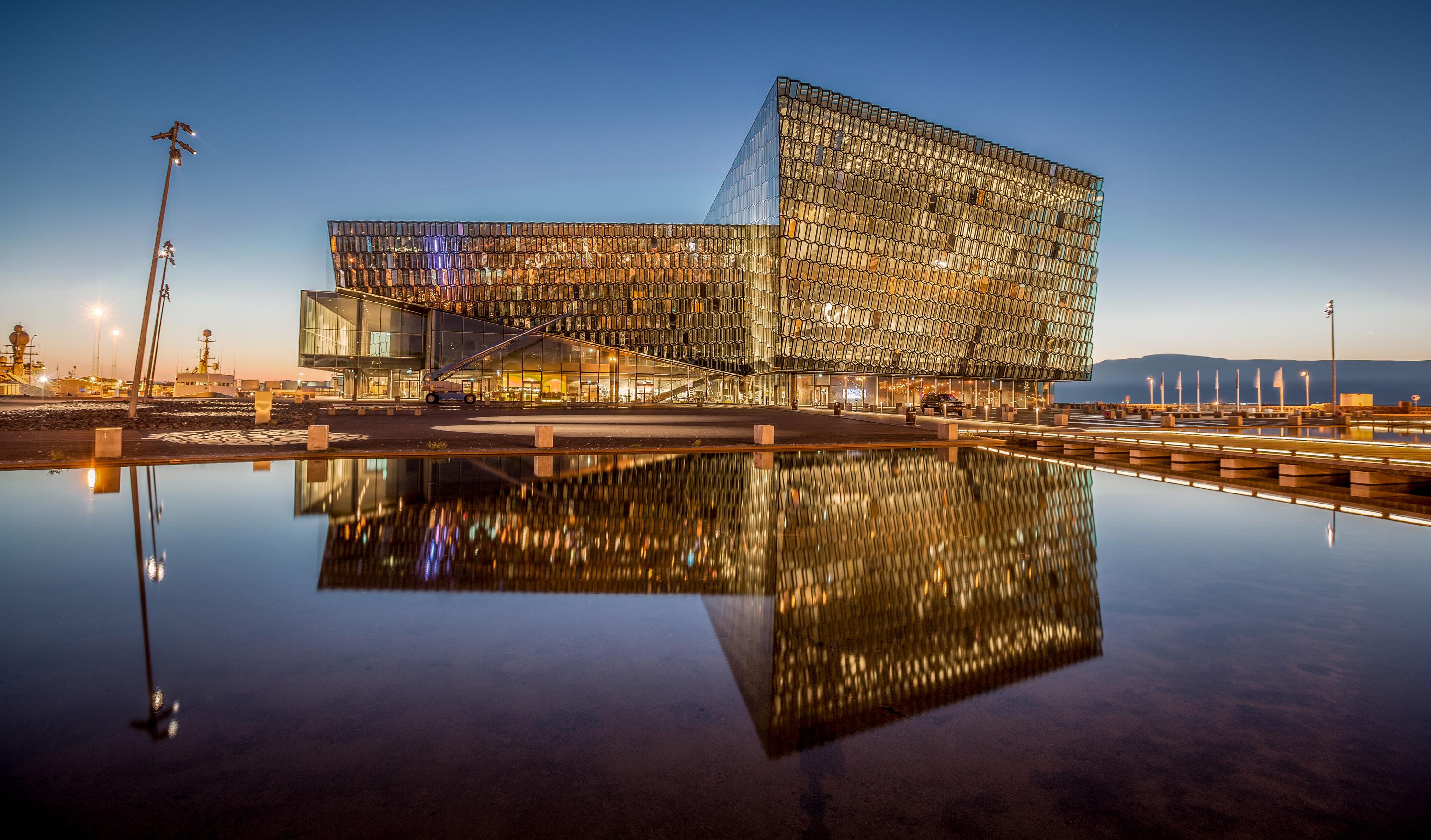
Who can resist spending time under the Midnight Sun? Almost perpetual daylight in the summer gives you even more hours to get to know Iceland. Outdoorsy types will revel in the myriad adventures available there, touring lava-strewn landscapes to visit geothermal oddities, as well as rustic thermal spas and super-high waterfalls. Simple day trips out of the city deliver ice caves, glaciers, geysers, Game of Thrones locations and more via super jeep, helicopter or boat. Do your best to get away from the usual tourist traps and explore lesser-known regions to help deflate overtourism and environmental concerns.
Reykjavik’s hipness is the perfect contrast to all the nature-tripping. There are incredible restaurants, ample art galleries, cool bars and live music to check out – including the gorgeous Harpa Concert Hall schedule. Interestingly, the Icelandic Phallological Museum is the world’s only museum dedicated to mammal penises. Icelanders treat a swim at the public pools like a social event, a way to relax and catch up on the local news. Check out the popular Laugardalslaug or the iconic Art Deco Sundhöllin pools. (VisitIceland.com)
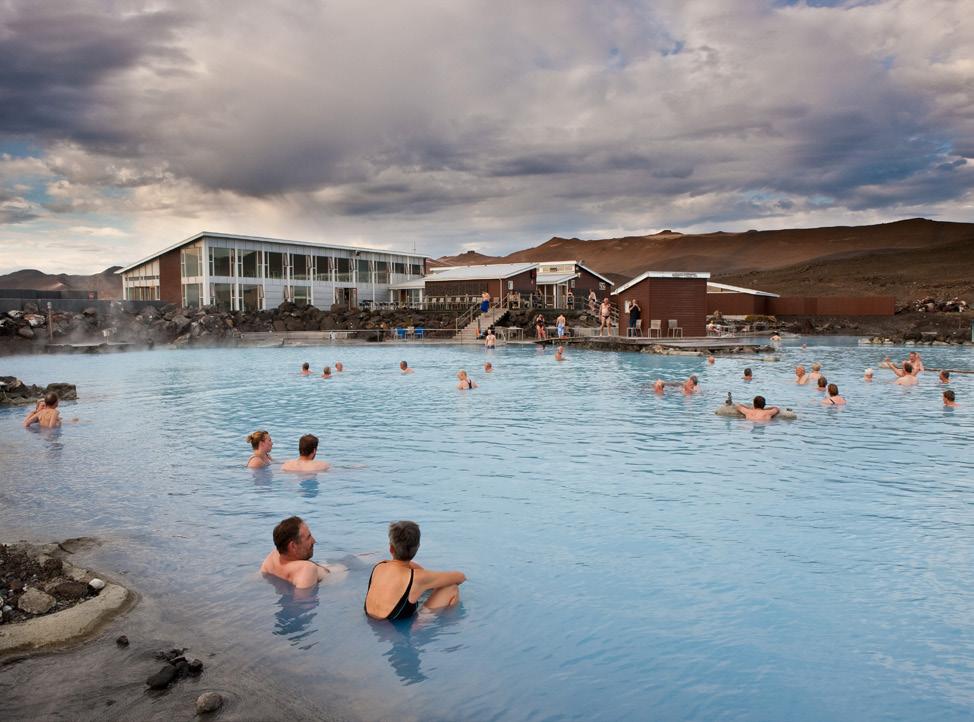



Just a short ferry ride north of St. Martin, this uncrowded northern Caribbean island offers balmy sub-tropical weather, more than 30 white-sand beaches and an avid dining scene. Expect a full restaurant culture here, from beach-bar basics to fine dining, with crayfish, lobster, snapper and mahi mahi filling the menus. Plan for a hearty barbecued lunch on Gorgeous Scilly Cay, an island in the bay of the village of Island Harbour. Only open a couple of days a week and reachable only by boat (they come and pick you up), it’s a rustic, open-air, family-run beach bar that’s been in operation for almost 40 years.
Anguilla has an easy barefoot elegance that other similar islands have to work hard for. The entertainment scene is also top-notch – live music is a huge part of Anguillan culture. Musicians flock here to both play and listen to world-class music across genres like soca, calypso, reggae and jazz.
An afternoon of sailing from bay to bay on a classic sailboat or power boat are just two cruise options to seek out. Quite a number of new resorts will be popping up over the next year or so at varying price points, so a travel agent may be your best friend. (IVisitAnguilla.com)




This June, the Toronto Symphony Orchestra (TSO) is inviting guests to experience a fusion of musical genres as part of an exciting concert at Roy Thomson Hall, which is part of a major cultural partnership for Pride Toronto 2025. One of the artists on the program will be Jeremy Dutcher, the indelible two-spirit artist, who will be joining in on Toronto’s Pride festivities as he celebrates National Indigenous Peoples Day with a concert on Saturday, June 21. Dutcher will be featuring music from his groundbreaking album Wolastoqiyik Lintuwakonawa and his newest album, Motewolonuwok.
There is simply no other artist anywhere in the world like Dutcher. Born in 1990 in a small, rural community near Fredericton, New Brunswick, Dutcher is a Wolastoqiyik member of Tobique First Nation (Neqotkuk). A classically trained operatic tenor and composer, Dutcher studied music and anthropology at Dalhousie University, where he began to intertwine his academic pursuits with his cultural roots singing in Wolastoquey, an endangered Indigenous language that has fewer than 100 fluent speakers in the world.
In 2018, after years of researching early 20th-century wax cylinder recordings of traditional Wolastoqiyik songs, many of which were at risk of being lost, Dutcher released his debut album, Wolastoqiyik Lintuwakonawa, a masterful fusion of archival recordings and contemporary classical arrangements. By integrating these ancestral voices with his own compositions, Dutcher not only helped preserve his community’s musical heritage but also brought it to a broader audience. His efforts and talent earned him the 2018 Polaris Music Prize and the 2019 Juno Award for Indigenous Music Album of the Year.
Five years later, in 2023, Dutcher released his ambitious sophomore album, Motewolonuwok , which continued his exploration of Indigenous identity and language through music. Unlike his first album, this innovative collection features songs in both Wolastoqey and English, to bring non-Indigenous listeners more fully into the conversation, making Indigenous stories accessible to a wider audience. Dutcher’s evolution as an artist brought critical acclaim, and earned him a second Polaris Music Prize in 2024, making him the first artist to win twice in the award’s 19-year history.
Beyond his musical achievements, Dutcher is a passionate advocate for Indigenous rights, the revitalization of Indigenous languages, and queer representation. Identifying as two-spirit, he uses his platform to challenge colonial narratives and attacks on Indigenous Peoples, lands and resources, while also promoting inclusivity, especially in today’s sometimes hostile environment.
“We need to come together in spaces of art and beauty and joy, just because it’s the antidote to a lot of the stuff that’s going on right now,” Dutcher told IN when we sat down with him in anticipation of his upcoming performance with the TSO for Pride Month. Read on for more on what guests can expect from the performance, why it’s important for him to combine different musical traditions, what Pride means to him, and much more.
Let’s kick things off and talk about your upcoming performance with the TSO on Saturday, June 21.
I’m pretty stoked about this one. It’s going to be next level. It’s going to be the realization of many years of work trying to marry some very different styles of music together. Plus, I don’t know that they’ve had a whole show in an Indigenous language before.
What should the audience expect?
Oh my gosh! I try not to predict too much or, like, play in the realm of expectation, but, certainly, they should expect a look! [laughs] I love actually getting to be on stage and being able to highlight some amazing designers like Mic. Carter.… I’ve been bathing myself in his clothes for a couple of years now. We may work something up. I haven’t quite decided what direction I’m going, but I’m going to pull something together!
But for me, the concert hall experience is a really special one, because we’re all there to listen to music together. And in this moment, especially, we need opportunities where we can come together and gather around stories that are not our own and hear from the other side.
You really do have so many different stories to share.…
I’m really happy to be a representation, for a couple of different communities, and that feels like a celebration. Whether it’s having Indigenous language in that space or being a queer person on that stage…it’s equally important to me. Showing that and being visible, in this moment, in that classical space, is going to be fun. So I hope the audience is expecting a celebration, because it is our month.
How is performing with an orchestra different from your usual performance setups?
It’s a 180! I’m fortunate that I’m able to put my music into a couple of different spaces. I do a lot of solo piano shows, I do shows with a jazz band of improvisers. But they are all about storytelling, which ties them together. But the orchestra shows specifically are, let’s say, the least free, which, as an artist, I love a creative constraint. Having 70 musicians looking at you waiting for you to play the notes…is a little bit daunting, and definitely a different musical experience than I’m usually stepping into. But to be able to elevate and lift our songs and our languages with the orchestra, it feels like another level.
How does that feel?
When I was going to classical music school, what I saw reflected within the canon of who the great composers were and what they wrote about…when they did mention native people, it was always in a bit of a crooked way. I figured coming from that community and knowing how beautiful our music is, wouldn’t that be an exciting opportunity, and a challenge, to try to weave those together.
Is it important to you to combine different musical traditions? It is. It’s also just where I find myself at the kind of intersection of the different music that I’ve been surrounded by my whole life. I was very, very fortunate that I was guided towards a mentor in our community, from a young age. Her name is Maggie Paul. She taught me a lot of our traditional songs and our language, which I’m able to take and blend. I think it’s an important expression.

Your TSO performance is scheduled during Pride Month and National Indigenous Peoples Day. What does ‘Pride’ mean to you?
Oh, wow. Yeah. I love that question, because it means something absolutely different to everyone. And even in those two cultural community contexts, it means something different to me as an Indigenous person and as a queer person. We sit as expressions of all these different intersections, and for me the idea of being proud or prideful sits in different cultural contexts. So when I think about what Pride as a movement has been, pushing for queer dignity and space and expression in our society…I think that’s beautiful.
As a young queer person coming from a rural part of this country, coming to my first Pride parade was a super impactful experience. It really changed what queer possibility was for me. Today, I think that the fight can’t end with marriage equality, especially as we watch things play out all over the world. Now there needs to be more solidarity and more love towards each other, rather than division.
You identity as a two-spirit person. What does that panIndigenous term mean to you?
Two-spirit is an English word that came from a beautiful gathering that happened in Manitoba in the ’90s, and they said we need to specifically speak about experiences of Indigenous and queer people because that intersection is a distinct experience. So, it names something in that moment.
I came out pretty young, when I was 12, and I don’t know if this is something that I came up with or if it’s something that I heard, but it really stuck with me: the limits of our language are the
limits of our minds. And so, when I came out as a young person, I came out as gay because that was the language I had access to at that time. It wasn’t until I moved away from home and got to meet other queer Indigenous people that I even heard the term to speak to it. Then I started to understand that there is this whole community of people that are celebrated at that intersection. So, for me, I think it’s a term that has built a lot of strength among our nations and between Indigenous Peoples. It also made a lot of non-Indigenous people curious about our gender systems, which in turn makes us curious about our gender system. I think we’re seeing a real interesting movement right now; I think to name and also to express in a way that honours all of our sides.
When we leap forward to today, it’s a term that’s very different from community to community and urban versus rural. There’s a real divide in terms of the place that queer Indigenous people hold in our community. I think it’s important that we name that.
Is it something you think a lot about?
Actually, my last record [Motewolonuwok], the title of it is the name for two-spirit people in our language. So the title of the record is like a very magical being…and they’re kind of changing, transformation people.
But, back to two-spirit.… It’s also a limited term and it can classify something. We have this way in our society of trying to dichotomize gender and sexuality. And I think we lose a lot when we try to do that. Because it’s not so simple. And a term like two-spirit is acknowledging that intersection and complexity, and I think that’s really beautiful.
Can you talk more about Motewolonuwok and the original songs you created for that album?
Totally. With my first album, it was all in the Wolastoqey language, and I had this kind of success that I did not expect at all. My first album was very DIY. But a lot of non-Indigenous people and people who didn’t speak my language listened to it. After, I thought this is a real opportunity to speak to them. Speak to them in their language so they can understand you and hear our stories. So my second studio album was about trying to weave together English songs and also traditional songs and put them in conversation with each other.
It’s really about queer people. The album reflects on gender diversity and how multiplicitous we are. If you go and watch some of the music videos, there’s a song called ‘Take My Hand’ and we shot a music video with this amazing two-spirit Elder named Gayle Pruden from Winnipeg. You know, putting our trans Elders onto the screen is a powerful moment. To see our beauty and our survival reflected into somebody who has lived it, is incredible.
You were the first artist in Polaris history to win the prize twice. Yeah. That’s what they say! [laughs] It’s a cool award, because it’s structured different from something like the Grammys. Right? It’s a panel of over 300 music journalists from across Canada who are selecting their favourite Canadian album released that year. It’s really open; there are no genre categories. It’s really just about people who listen to and write about and love music. It’s cool and it’s such an honour to be selected by people who really care

about music. It’s not about sales or how many followers you have. It’s not about any of that. And, thank God, because I wouldn’t be considered if it were, you know, Shawn Mendes – he would win every year. I don’t do it for the awards, obviously, but to have the music community reflect and say we like what you’re doing, that’s a good feeling.
Last question. After your performance with the TSO, what’s next for you?
Oh, the most difficult question of all. Well, to be honest, right after, I’m hopping on a plane and going to Norway. I’ve been doing a lot of work up there with the Indigenous community in the north of Scandinavia. I’m going to be doing some writing and talking with some of their Knowledge Keepers and Elders up there. I’m also going to Japan on tour with my band in August.
Jeremy Dutcher will perform with the TSO on Saturday, June 21, at Roy Thomson Hall in Toronto. For more information or to buy tickets, visit TSO.CA/JeremyDutcher.
The TSO will also host a post-concert Summer Solstice Party on the Roy Thomson Hall Patio, which will feature a DJ, entertainment, cash bar, light snacks and more. Tickets to the party are available as an add-on to the concert.
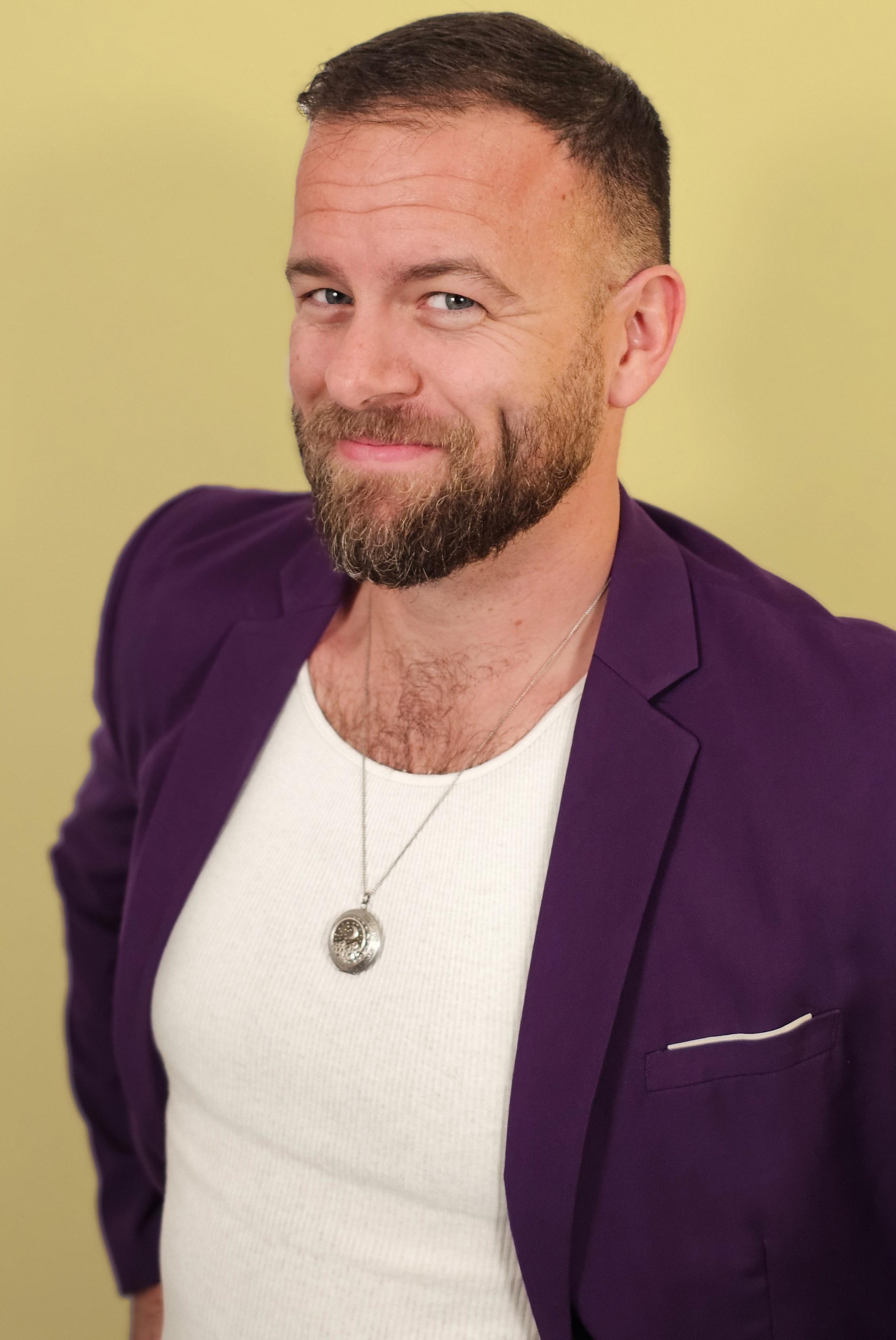
This summer, singer-songwriter Michael Maimone will release Guess What? I Love You, a deeply personal album honouring his late husband, PR guru Howard Bragman. Known for his work with celebrities like Anna Kendrick, Cameron Diaz, Stevie Wonder and Joe Manganiello, Bragman was also a tireless advocate for LGBTQ+ rights. He played a crucial role in helping stars such as Meredith Baxter, Sheryl Swoopes and Chely Wright navigate their public coming-out journeys, using his influence to make the world a more inclusive place before he died as a result of leukemia in 2023.
The story behind Guess What? I Love You is one of profound love, loss and healing. Just one day after their wedding, Maimone held his husband as Bragman took his final breath. Grief-stricken but determined to honour their love, Maimone turned to music as his refuge, channelling his sorrow, memories and devotion into an album that captures the depths of their connection. Each song is a reflection of their journey together, a raw and heartfelt exploration of what it means to love someone so deeply and then to lose them.
The album unfolds like a two-act play. The first half celebrates the magic of their relationship – the excitement of their long-distance courtship, their spontaneous adventures, and the joy of finding each other later in life. One of the standout tracks, “Big Kiss,” was inspired by a road trip the couple took through the southwestern United States. The song, releasing this month, captures the beauty of their love while also touching on the hesitation that still exists for same-sex couples who are showing affection in public. “We always held hands wherever we went, but we joked about how kissing in public sometimes still felt like making a political statement,” Maimone recalls.
More than just a love song, “Big Kiss” serves as a powerful tribute to Bragman’s legacy as a champion for LGBTQ+ rights. Through his work with organizations like APLA and GLAAD, Bragman helped countless people live openly and proudly. Says Maimone, “Releasing the track during Pride season felt like the perfect way to carry on Howard’s message and remind the world that love should always be celebrated without fear.”
“ THE STORY
BEHIND GUESS WHAT? I LOVEYOU IS ONE OF PROFOUND LOVE, LOSS AND HEALING.”
The album’s second half shifts into the painful reality of Bragman’s illness, his rapid decline, and Maimone’s grief. Some of the hardest songs to write were “Helpless” and “So Hard to Let Go,” with Maimone admitting that he often broke down in tears during the process. “Without that catharsis, I’m not sure how I would’ve survived,” he says.
The album weaves Bragman’s presence into its fabric in hauntingly beautiful ways – through actual voicemails, direct quotes from their text messages, and recordings that make it feel as if he’s still speaking to Maimone. The final track, “Waiting in the Light,” fades out rather than ending definitively, reinforcing the idea that their love story – though altered – continues beyond this life.
Maimone has found solace in the support of the LGBTQ+ community, receiving messages from people who knew Bragman or were touched by his work. The shared memories, stories and outpouring of love have become a source of strength, reminding Maimone that while Bragman is gone, his impact remains. But Bragman’s influence goes beyond grief: it gave Maimone the courage to fully embrace his artistic identity. Before meeting Bragman, Maimone had been in a restrictive relationship that stifled his creativity, but Bragman encouraged him to live authentically, both personally and professionally.
One defining moment came when Bragman filmed a playful video of Maimone stepping out of the shower and suggested he post it on social media. To Maimone’s surprise, the post went viral, leading to a surge in Patreon subscribers and ultimately providing Maimone with the financial stability to focus on his music career.
At its core, Guess What? I Love You is a testament to the power of love – the kind that transforms, heals and endures even in the face of loss. “Losing Howard was the hardest thing I’ve ever experienced,” Maimone reflects. “But every second we had together was worth it. We lived with no barriers, no secrets, no limitations. And as much as it still hurts, I would do it all over again just to have more time with him.”
He takes comfort in knowing exactly how Bragman would react to the album. “He would sing along in his perfectly imperfect way and tell everyone, ‘My man didn’t just write a song for me – he wrote me a whole album!’”
Maimone’s journey of love and loss doesn’t end with this album. He has also written a memoir, set for release this fall, offering a deeper look at his and Bragman’s love story, the pain of losing him, and the ongoing journey towards healing.


Fierce, queer and fashion-forward, Samuel Mariño is shattering opera’s limits with style and sound
By Elio Iannacci
Samuel Mariño doesn’t just sing – he galvanizes. With a majestic soprano voice, a luxury designer wardrobe and a flair for the subversive, the Venezuelan-born singer is queering the opera world from the inside out.
Growing up in Caracas, Mariño stood out – for his extraordinary voice, and for the unapologetic way he moved through the world. When his peers’ voices changed and lowered during puberty, his didn’t. The bullying was brutal. But so was Mariño’s resolve. His family doctor suggested music, explaining there was no “cure” for his naturally elevated vocals. So he dove into opera throat first, studying at the National Conservatory in Caracas, then at the Paris Conservatory. What began as a form of self-preservation became a streak of artistic triumphs, resulting in three albums and countless sold-out concerts around the world.
Mariño’s voice – rare, radiant and unapologetically high –symbolizes the combination of delicious revenge and constant rebellion. He’s not here to fit into classical music’s antique moulds. His purpose is clear: it is to bend expectations, cross genres, and redefine and reignite the very concept of being fierce. His performances are part concert, part couture: glittering eyeshadow, gender-fluid looks, and a vocal range that feels otherworldly.
His debut album, Sopranista, explores the haunting legacy of the Castrati – young boys mutilated to preserve their soprano voices, a practice thankfully outlawed in 1903. Mariño reclaims that lost history with elegance and power, taking on arias once written for them – and for women – and tributing them. It’s not nostalgia; it’s revitalization.
Weeks before arriving in Toronto to perform with the Tafelmusik Orchestra at Koerner Hall on May 23-25, Mariño opened up about his muses, his mission, and why making space for queer voices in classical music isn’t just important – it’s an act of radical recovery.
What would you say has been the most satisfying thing about making a mark on opera today?
Things are changing in opera, and to be part of that change is exciting. When I started, opera felt strict – but I offered a path to liberty. For artists, audiences and for myself, I want to enter a new age of openness, which opera isn’t always known for. I see transformation is happening slowly...inch by inch. I want to push it.
In his book The Queen’s Throat: Opera, Homosexuality, and the Mystery of Desire, author Wayne Koestenbaum describes his experience of listening to opera. He writes that it makes him feel like ‘both bride and groom,’ as though he is ‘swallowing a gender system and reconfiguring it.’ Does that resonate with you?
Absolutely. That’s so accurate it’s scary. Opera reflects a combination of emotions from men, women or anyone beyond gender. My goal is to expand that and go over the boundaries. I love this music –it’s modern to me. It should be embraced by a broader community because it has themes that go beyond gender.
For someone new to your singing, where should they start? Something from my first album, recorded at 24. Any of the Handel arias. Maybe ‘Quella Fiamma’ – which means ‘That flame.’
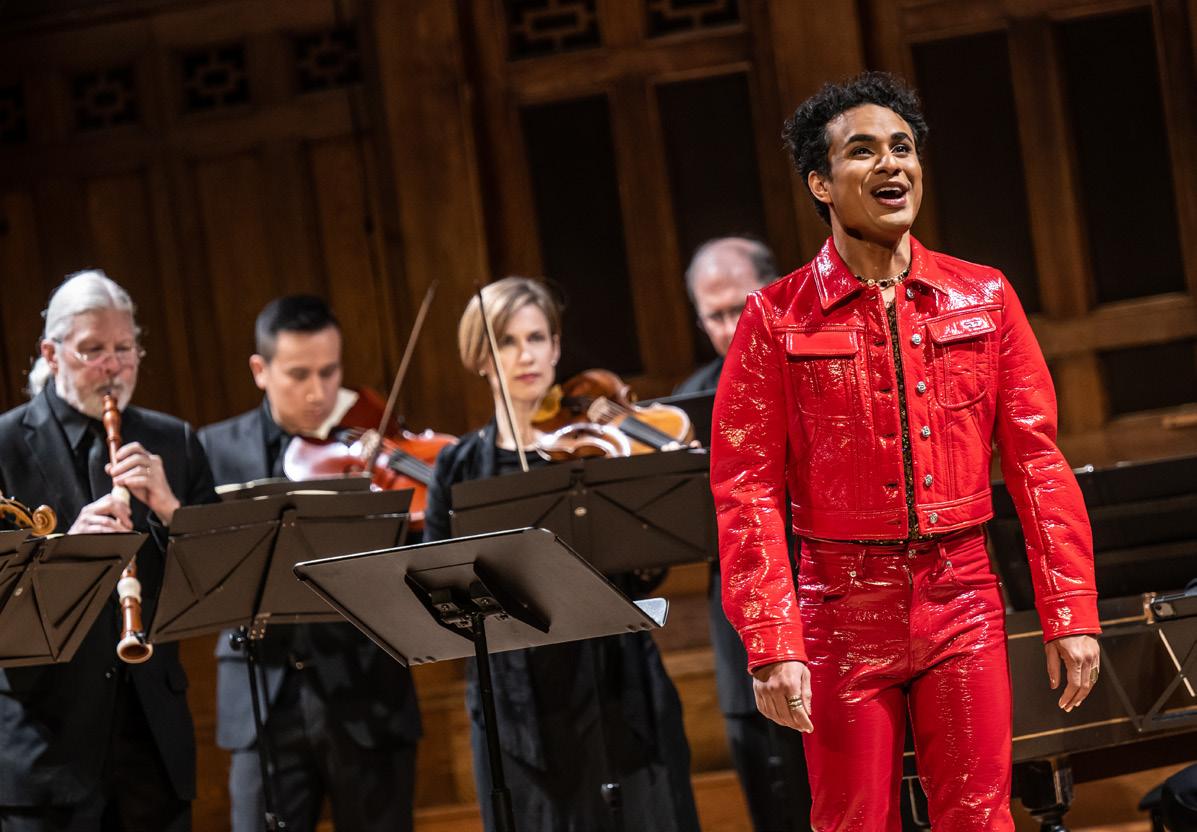
Do you prefer being in the studio or on stage?
I’m very expressive and take a lot of risks on stage. Opera is extreme – we die of joy, sadness and love. That intensity happens because the audience helps build it. In the studio, you sing to a microphone. It’s about clean vibration, perfection, timing. It’s not like Maria Callas used to record. On stage, anything can happen.
What do you love about Maria Callas’s raw recordings? They’re truthful – like live theatre. You can relate even if you don’t speak the language. She wasn’t striving for perfection. She was looking for truth. I think she is the last real opera diva.
You’ve talked about being bullied as a child. What was your escape?
Leia, my dog, was my confidante. My parents were busy being university professors. I did many activities, which helped me escape – but not heal. That came later, in my 20s.
What prompted that healing?
Singing. I became less afraid of who I am. That gave me strength to go against convention. I’m not the best singer, but my voice is a channel.
What’s the biggest risk you’ve taken?
Singing in Krakow – performing very dramatic arias like Haydn’s ‘Berenice, che fai’ and Beethoven’s ‘Ah! Perfido.’ The characters wanted to die for love. Three months in, I was emotionally empty. I kept repeating, ‘I want to die.’ I couldn’t finish the run of the show, so I cancelled my next engagement and took a last-minute flight to Colombia. I needed to feel grounded again.
What did you learn from that moment?
That this is a job. It pays my bills, but it’s not my life. I give it my best, but I have boundaries now.
Which opera heroine are you most like: Carmen, Norma, Cleopatra, Tosca or Cio-Cio-san?
Norma. I’m very committed to my people, to the queer communities around the world just like Norma is committed to her tribe. She’s independent and tells people to fuck off when she has to. But part of me is Cleopatra too – she’s slutty, and I understand her. She knows what she wants. So do I.
Have you seen the Elizabeth Taylor Cleopatra?
I’ve tried three times! I love that she isn’t about beauty for beauty’s sake – she’s about freedom. That’s the message I want to send on
stage. We must be free – especially now, with society becoming stricter and more traditional. When I sing, I want people to know they’re beautiful as they are – not who they think they need to be.
Which pop singers do that well?
Madonna. ‘Like a Prayer’ was banned by the Vatican and was so iconic. Her work with Jean Paul Gaultier is unforgettable. Opera can sometimes feel so backward compared to pop. I always keep asking…why can’t opera be more forward?
“ He’s not here to fit into classical music’s antique moulds. His purpose is clear: it is to bend expectations, cross genres, and redefine and reignite the very concept of being fierce.”
Do you think drag and RuPaul’s Drag Race can help opera today?
Absolutely. I did an opera in Copenhagen with Vinegar Strokes, from the UK [franchise]. Opera managers always say, ‘We need a new audience,’ but not all are open to change. One told me, ‘I don’t want a new audience – people always get old, and old people come to opera.’
There’s hope. In 2022, librettist Sebastiano Bazzichetto and composer Milen Apostolov premiered (m)0rpheus in Verona – the first trans opera. It didn’t try to be a role model. That’s what we need. I love when people dislike what I do – it means I’m doing something right. I’m not a piece of gold to please everyone. Inclusion means there’s room for everyone. Opera has potential – some of this music is 500 years old, but it’s still alive because we still feel the same things.
What happens when queer artists and divas create together? Creative explosions. Both are told how to behave, to be role models, that they need to follow rules to succeed. When two groups that have been oppressed unite, freedom breaks through.
Your recording of ‘Alto Giove’ is stunning. The aria is featured prominently in 1994’s Farinelli, a movie about the legendary castrato. Have you seen the film? I saw it at 12, then again in my 20s. It’s beautiful, but sad. I wanted more of the glamour – being Farinelli, being a castrato. If they ever remake it, I’d love to show how huge and extra he was. He was like Michael Jackson and Lady Gaga combined. His costumes, his arias, everything was massive.
You have been coached by American soprano Barbara Bonney for years. What life lessons did she teach you?
I was with her in Salzburg just last weekend. I’m still learning. The most valuable lesson? Be a good human. It’s easy to get lost

in this business and become a bad person. There’s pressure to be excellent all the time.
What kind of pressures have you faced?
#MeToo happens in opera, too – but no one talks about it because it’s not Hollywood. I’ve had conductors knock on my hotel door saying they had ‘notes’ for me – or asking to meet in their room. Thank God I wasn’t abused, but you have to be careful.
The Brandenburg Orchestra’s artistic director once described your notes as ‘the colour of plum.’ What color do you think you sing in?
Silvery. But now, as time goes by, I think my delivery is becoming more of a hot chili red.
You’ll sing ‘Odio, furor, dispetto’ [‘Hatred, fury, spite’] during your performance in Toronto with the Tafelmusik Orchestra. When performing something so intense, where does your rage go? Many women and many gays have abusers in their life. I don’t

send rage or hate to them – I send them the pain and scars I’ve lived through.
What’s your favorite aria in this program?
‘Dove Sono’ from Marriage of Figaro. I added it last minute. The lyrics – Dove sono i bei momenti – mean ‘Where are the beautiful moments?’ It’s about missing beauty and begging heaven, ‘Give me just one more day.’ I’m a big romantic. I love falling in love, even though I’ve had my heart broken many times...
Your new album goes beyond traditional opera. How so? I just finished recording yesterday. It’s something completely different – more about who I am. At the start of my career, I sang a lot of baroque. Then I moved into Mozart, just to show people I could go there. But now, I’m done proving anything. People know I can sing baroque and 18th-century repertoire. This time, we’re stepping into the 20th and 21st centuries: Rachmaninoff, Berlioz, Dvořák – even Edith Piaf’s ‘Hymne à l’amour.’ It’s very personal. It’s not about hitting all the high notes or being virtuosic – it’s about transcending. I don’t know when it’ll be released, but I can’t wait.
Any last words?
I believe it’s my duty to bring justice to opera. As someone who was abused and bullied as a child for having this voice, that mission runs deep. I want to see true diversity – not just for queer artists, but across all races. Too often, I’m the darkest-skinned person on stage, or the only one unafraid to fully embrace being part of the queer community. That needs to change.
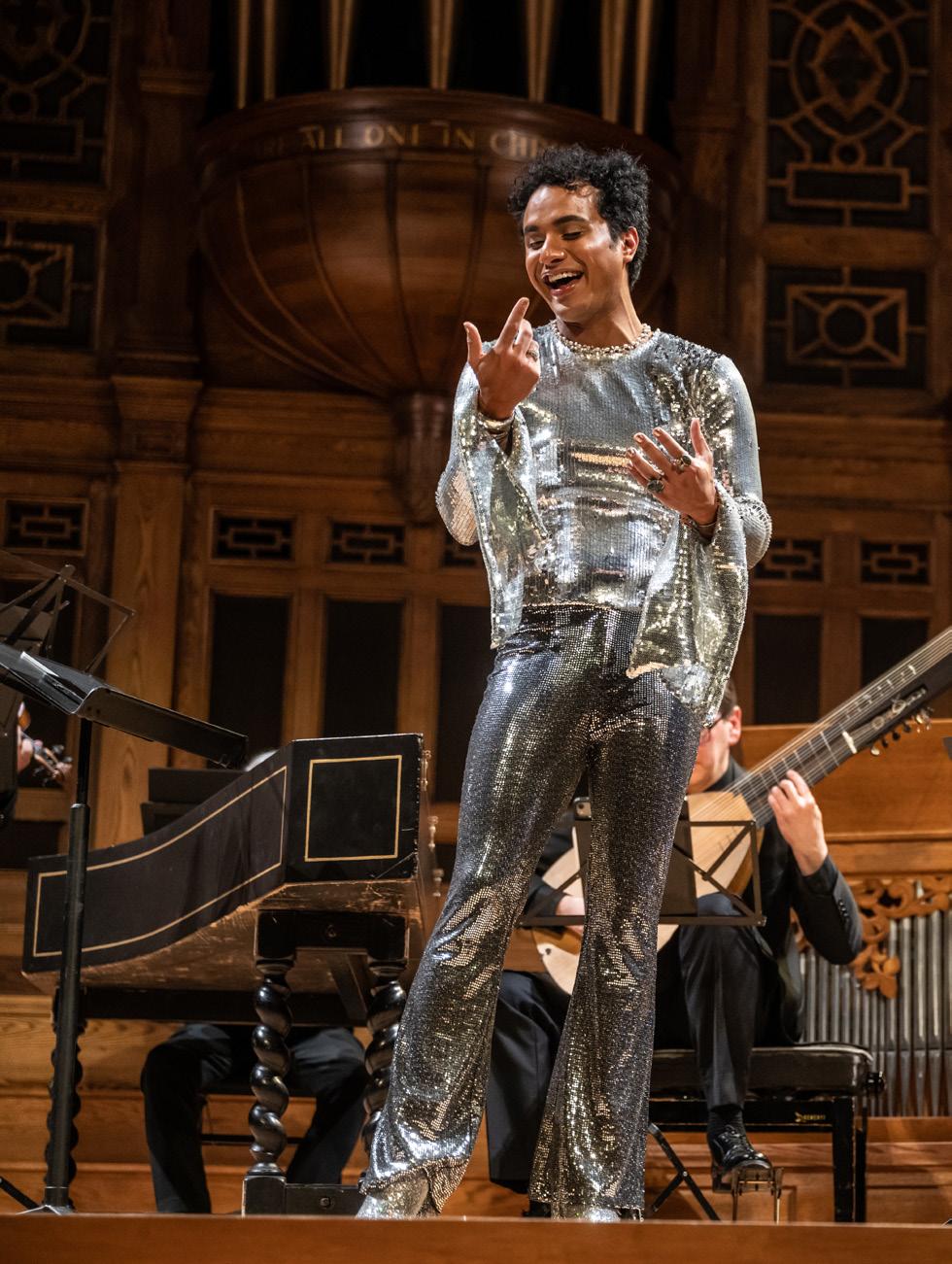

By
Maxxie LaWow: Drag Super-Shero is the world’s first animated feature centred on a drag queen superhero. The film follows Simon, a shy, gay barista who stumbles on a magical wig that transforms him into the fearless and fabulous Maxxie LaWow.
“Simon’s journey is about learning to believe in yourself,” says Anthony Hand, the film’s out director and creator. “His transformation into Maxxie represents that pivotal moment we all experience – when we stop waiting for permission and start embracing who we truly are. Given the current political and social challenges facing the LGBTQ+ community, the film’s message of self-empowerment is more relevant than ever.”
As Maxxie, Simon must harness his newfound power, defend his community and take on the villainous Dyna Bolical – a ruthless yet glamorous drag scientist with a sinister plan. Determined to reclaim her family’s fortune at any cost, Dyna concocts a devious scheme involving an unusual beauty secret: drag queen tears! With the stakes higher than ever, Maxxie must rise to the challenge.

No drag-themed adventure would be complete without a showstopping lip-sync battle. Drawing inspiration from RuPaul’s Drag Race, Maxxie LaWow: Drag Super-Shero delivers a gravitydefying aerial showdown filled with clack fans, makeup powder attacks and high-flying choreography. “We collaborated with a choreographer who has staged performances for drag royalty like Bob the Drag Queen and Bianca Del Rio,” Hand explains. “The result is a lip-sync duel that’s pure, campy magic.”
Some of today’s most famous drag queen personalities from RuPaul’s Drag Race lend their voices to the film, including Jinkx Monsoon, BenDeLaCreme, Monét X Change and Rosé.
Music plays a key role, too, with four standout original pop tracks that drive the story forward. Grammy-nominated vocalist Angie Fisher delivers powerhouse performances on tracks like “Bye Girl Bye,” an anthem of self-empowerment, and “Shero,” a high-energy opening number celebrating individuality.
Beneath the wigs and witty banter, Maxxie LaWow: Drag SuperShero carries a powerful message about self-acceptance and the strength of chosen family.
“Maxxie LaWow is a love letter to the queer community – joyful, empowering and utterly fabulous,” says Rich Wolff, CEO of
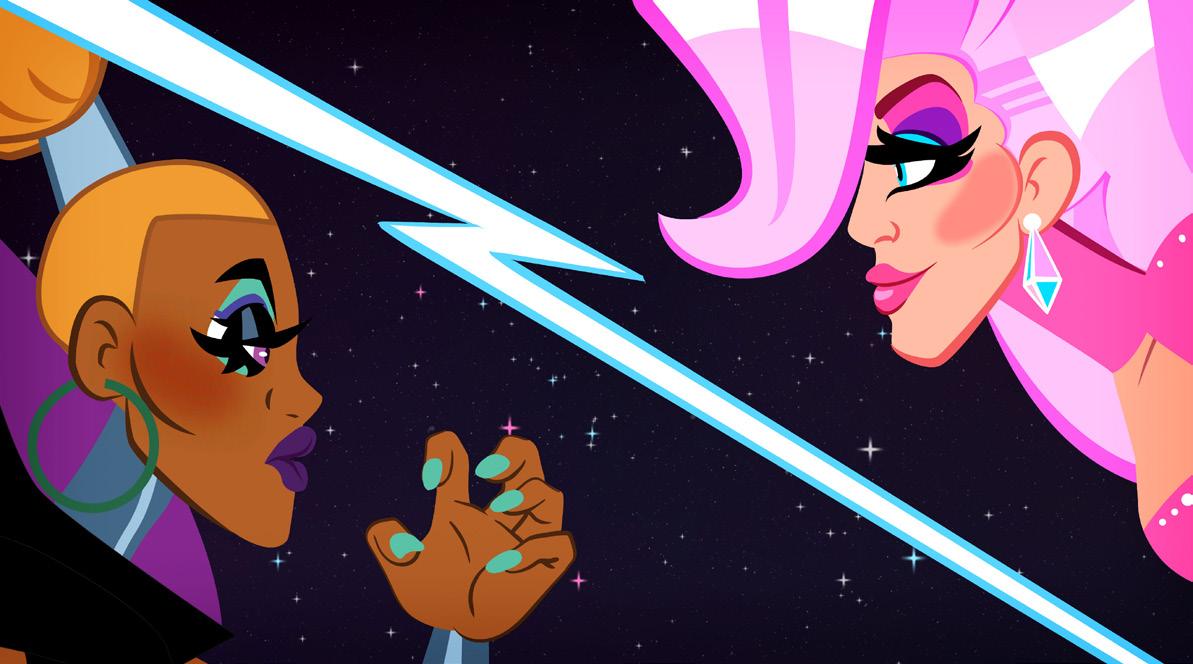
Breaking Glass Pictures, the film’s distributor. “We can’t wait for audiences to experience the magic.”
As the first animated feature to spotlight a drag queen superhero, the film marks a milestone in LGBTQ+ representation. “At a time when LGBTQ+ voices are being challenged, we need stories that celebrate our resilience, our joy and our magic,” Hand affirms.
“Maxxie isn’t just a hero – she’s a reminder that we all have the power to shine.”
"As the firSt animated feAture to sPotlight a drag queen superhero, the film marks a milestone in lgBtQ+ representation."

By Elio Iannacci
by Benjy Bradshaw
makeup and styling
Barbara Tucker
While it’s impossible to definitively crown a single Queen of House Music, 58-year-old Barbara Tucker is undeniably a finalist – a major contender, a true frontrunner for the title. For more than four decades, she’s brought a surge of spirituality to LGBTQ+ dance floors with anthems like “Beautiful People,” “I Get Lifted” and “Stop Playing With My Mind.”
Those three tracks – and the multiple number one Billboard Dance hits she’s released over the years – aren’t just club bangers. They’re sonic sermons, rising above the “leave your politics at the door and party” ethos of the ’80s, ’90s and 2000s. Tucker’s catalogue is packed with motivational lyrics and uplifting melodies that recharge anyone who’s been through the wringer.
Her voice? Unmistakably church. Thoroughly unique. But in flashes, her gospel-fired power evokes the spirit of Mahalia and Aretha, the glamour of Donna and Gloria – all in one electrifying swoop.
Weeks before headlining Prism’s La Maison de La Leche event at Toronto Pride on June 27 and releasing her first book, Music Industry 101: Class Is In Session, Tucker sat down with IN Magazine to talk about her history in house music, her transcendental repertoire, and how she’s learned to lift up the LGBTQ+ community – and herself – through life’s toughest moments.
One of your greatest songs, ‘Stop Playing With My Mind,’ has been played in clubs for over two decades. Why do you think that line – ‘you have to love me or leave me’ – still hits? That song was actually created as a joke between me and Duane Harden. He wrote ‘You Don’t Even Know Me,’ and we were throwing shade in the studio. ‘Stop Playing’ was based on a straight woman falling in love with a gay man. We built a dialogue – lines
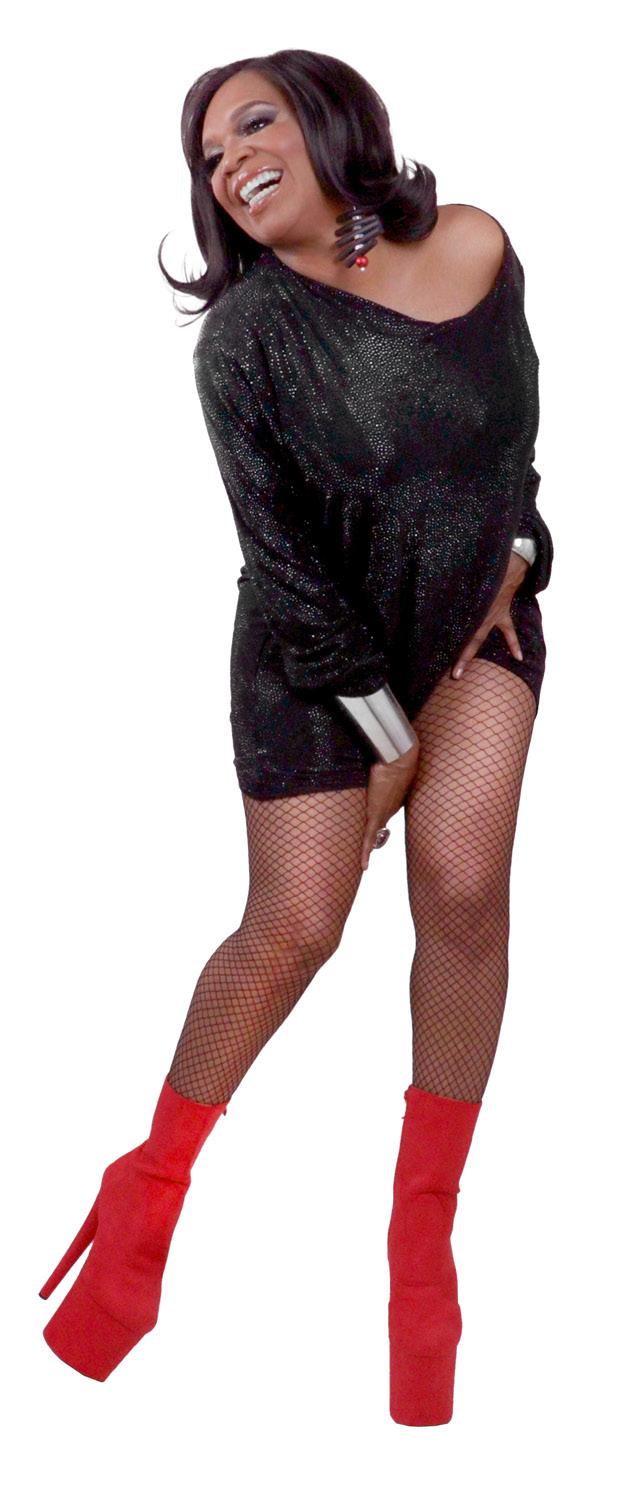
like ‘You should’ve known the coffee before you took the cream.’ It’s a sexual statement, but it’s emotional too. I think a double or triple meaning goes a long way.
When you sing it, it sounds almost like motherly advice. Do you feel that?
Oh yes. They call me Mother and Queen – and I receive that with love. What hurts is when people write about the music but don’t even mention your name, even though you’re the voice and the writer. So when someone honours me like that, I’m deeply thankful. If what I give feels motherly, spiritual or queen, then I’ve done my job.
Another one of your tracks experiencing a resurgence in clubs is ‘Oh Life.’ Its lyrics, ‘Don’t give up. We can handle it,’ resonate deeply today. Do you practise what you preach?
Oh yes, I take my own advice. When I sing, I’m speaking to you and to my own peace of mind. I’m prophesying to myself, thinking, ‘Girl, life won’t always be this way,’ because I believe this world we are in is momentary. Angels come in all forms and sounds to protect us, but those who wish to divide us, harm us, are not part of my vision. I won’t use anger to make art.
Many beloved queer icons, from Barbra Streisand to Lady Gaga, channel rage as a motivator. Is it challenging for you to do the same?
I intentionally work on a higher vibration. I’ve reached for my higher chakras because I know when I start saying things like, ‘They’re evil. They’re racist. They have so much prejudice. They hate us,’ I am speaking in hate too. You don’t want to mirror whatever you’re fighting against. What you fight, you ignite. It might not work for the whole world, but I focus on healing so I can project love around you and me. When I keep expressing and exuding love, people keep coming around me.
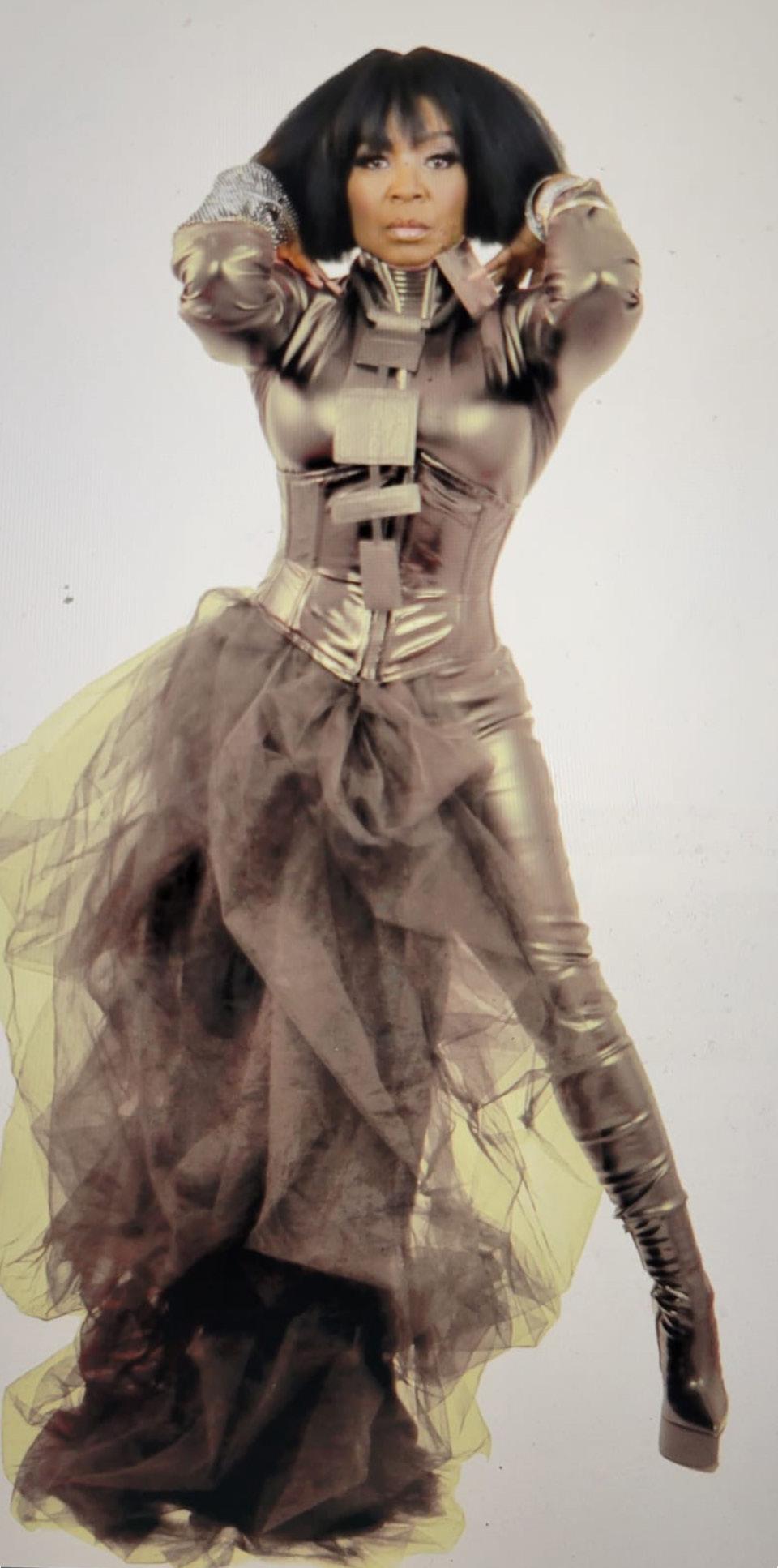
I’ve been speaking with artists who are creating to self-govern outside of the current political atmosphere. Do you feel your work is an act of self-governance?
I see certain groups acting as puppet masters, laughing at the people, and I need to cut that out of my life. I just hope that this music reminds people that we are united.
What motivates you today?
I don’t rely on the government or politics to uplift me. I continue creating music because, as the O’Jays would say, there’s a message in the music. I might not be on a pulpit as a preacher, but I will be on a stage with a song that’s going to bring forth a gift.
Can you share memorable experiences from the gay clubs you frequented?
I used to dance with a group called Internal Combustion. My choreographer was a drag queen. We would go to Manhattan’s West Side to see him perform. I once saw a drag queen group impersonating me and my old group, Harlequin 4, because we had a hit with ‘Set It Off.’ I’ve always been drawn to drag queen shows throughout my career, performing alongside Deee-lite and later with Lady Bunny, who booked me every year to perform at Wigstock.
What advantage did performing at Wigstock give you?
It was an education. You can’t beat your face until you’ve learned from a drag queen how to beat it. I learned that. I learned how to bring comedy to the stage and have fun with my show. Many singers just sing and dance, but they don’t take the time to say something cute or inspirational. I’ve seen the wit and the glamour that some of New York’s best drag performers have, and it was like school. Also, I learned about smart footwear, honey. I looked at the drag queens, and they’ve always had on pumps or platforms. I used to wear heels; now I wear platforms to this day.
Which designers do you feel epitomize the glamour you bring to the stage?
I follow no designer. I’m feeling the kimono styles, even off-theshoulder ones. If I’m wearing unitard pieces, there’s always some type of ruching material. I have some rules: I can’t have too much of my butt showing. There’s always a sense of ladyness to what I do. I’m forever inspired by Natalie Wood in ‘Gypsy’; her classy stripper look was fantastic, especially when she had the long dress that she could Velcro off for a reveal. Artists like Josephine Baker and Ann-Margret fuel me. They gave you mystery, and you always wanted more. I don’t want to be tacky.
You once said, ‘Diva energy is a sustaining power.’ What did you mean by that?
The word ‘diva’ comes from divinity. It’s a spiritual thing. It’s an anointed title that draws the masses to you. I’m talking about commanding your presence when you walk into a room and people do a double take. There are fake divas – those who call themselves divas are fake. When they say, ‘I’m this. I’m the one,’ I say, ‘No, honey – you don’t even have to say it. Nobody has to tell you.’
What inspired you to write ‘We Can Heal’?
My spiritual studies helped me write that song. It lets us know that we’re only one race. We’re not the Black race, the white race, the gay race. We’re one. You just like rice, and I like spaghetti, but
we can eat at one table. I just want people to stop treating others like they’re aliens.
I interviewed the late Kim English when I first started writing about music, and she told me she was struggling to balance her church’s views with her ties to the LGBTQ+ community. Is it the same for you?
Of course not. I go to a prophetic ministry. We know everyone has a free life; it’s a space where five other people can be gay next to you while you are praising God. We’re not condemning people or sending anyone to hell. Look, religion is man-made. That’s why I am not religious, but I still serve God. My God is not worried about who’s in my bed.
You wrote a book – Music Industry 101: Class Is In Session . Why was that important for you?
Because if you don’t tell your story, someone else will. I’ve done off-Broadway, clubs, concerts all over the world. But I didn’t have a map. I had to create a future I didn’t see. That’s why I wrote a rulebook. One Sunday in church, one of the prophetesses told me, ‘You’re like the Harriet Tubman of house music.’ That stuck with me. I want to help others make it through.
Did you know ‘I Get Lifted’ would be as impactful as it became? Immediately. But it wasn’t just about the song – it was the journey. God let me link with legends like Cerrone, Guetta, Louie Vega…but I had to go through the trenches first. The scars gave me power. So when it was time to deliver, I had the experience to lift people up.
Who do you listen to when you need lifting?
Le’Andria Johnson. She sings from pain. Her song ‘Deliver Me’ –whew. That one ministers directly to your soul. When you get the chance, listen to it. You’ll feel every word.
You’ve performed ‘Beautiful People’ countless times, but it never feels tired. Why?
Because I’m not just singing to you or me – I’m seeing the world’s pain when I’m up on stage. That song is my assignment. I want to hold people with my voice. There’s too much evil out there. I’m not here just to sing about a party – I’m here to touch, move and give hope. When I sing ‘I Get Lifted,’ it’s not just about me. We’re all getting lifted.
‘Beautiful People’ keeps on getting rebirthed and remixed. Why do you think it has lived so many lives?
Because I feel like I have as well. The song is universal, and I’ve been in this game for 40 years. I’m putting a new version out soon through my label. India and Lem Springsteen – who wrote the original – gave me the freedom to add my voice, those ad-libs like ‘deep, deep inside’ and ‘all we need is love.’ Then Louie Vega added his blessings. People don’t know how much it evolved through the years and all the beautiful people who are part of ‘Beautiful People.’ I mean, at one point, we’d bring an all-star choir of nine background singers to New York clubs on the regular. It was pure church.
What’s your definition of a beautiful person?
It has nothing to do with an outside look or external beauty because we all wear a costume. It’s your heart and it’s your actions that make you beautiful. What you’re feeling inside manifests true beauty.







Black Pride YYC is a Calgary based 2SLGBTQ+ non-profit, volunteer-driven and community service organization providing support programs to the African, Black and Caribbean communities.
Through a range of initiatives and support programs in which we have been able to impact 234 participants with tools to boost their careers, offer over 60 hours of free therapy and much more... Black Pride YYC works to build community, offer resources, and promote the well-being of Black individuals across the 2SLGBTQ+ spectrum. We believe in the power of representation, storytelling, and collective care.
The fight against hate is not a political debate... it is a moral imperative to protect the lives, dignity, and futures of 2SLGBTQI+ individuals across Canada.


@blackprideyyc
At Black Pride YYC, we celebrate and support the Black 2SLGBTQ+ community through events, advocacy, and care. We host gatherings that build community and support, offer mental health and peer support, and run programs that empower our members. Our work also includes outreach programs that provide essentials and connect people to housing, healthcare and employment.

Over the next few years, we aim to grow our Economic Resilience Program, offering more financial literacy workshops and career-building opportunities. We also plan to strengthen our mental health initiatives, increasing access to free therapy and peer support networks.
We are making history, fostering change, and ensuring that every Black queer individual in Calgary has the opportunity to thrive.
The Toronto writer recently released his memoir The Vinyl Diaries: Sex, Deep Cuts and My Soundtrack to Queer Joy, which chronicles his second coming out
By Paul Gallant
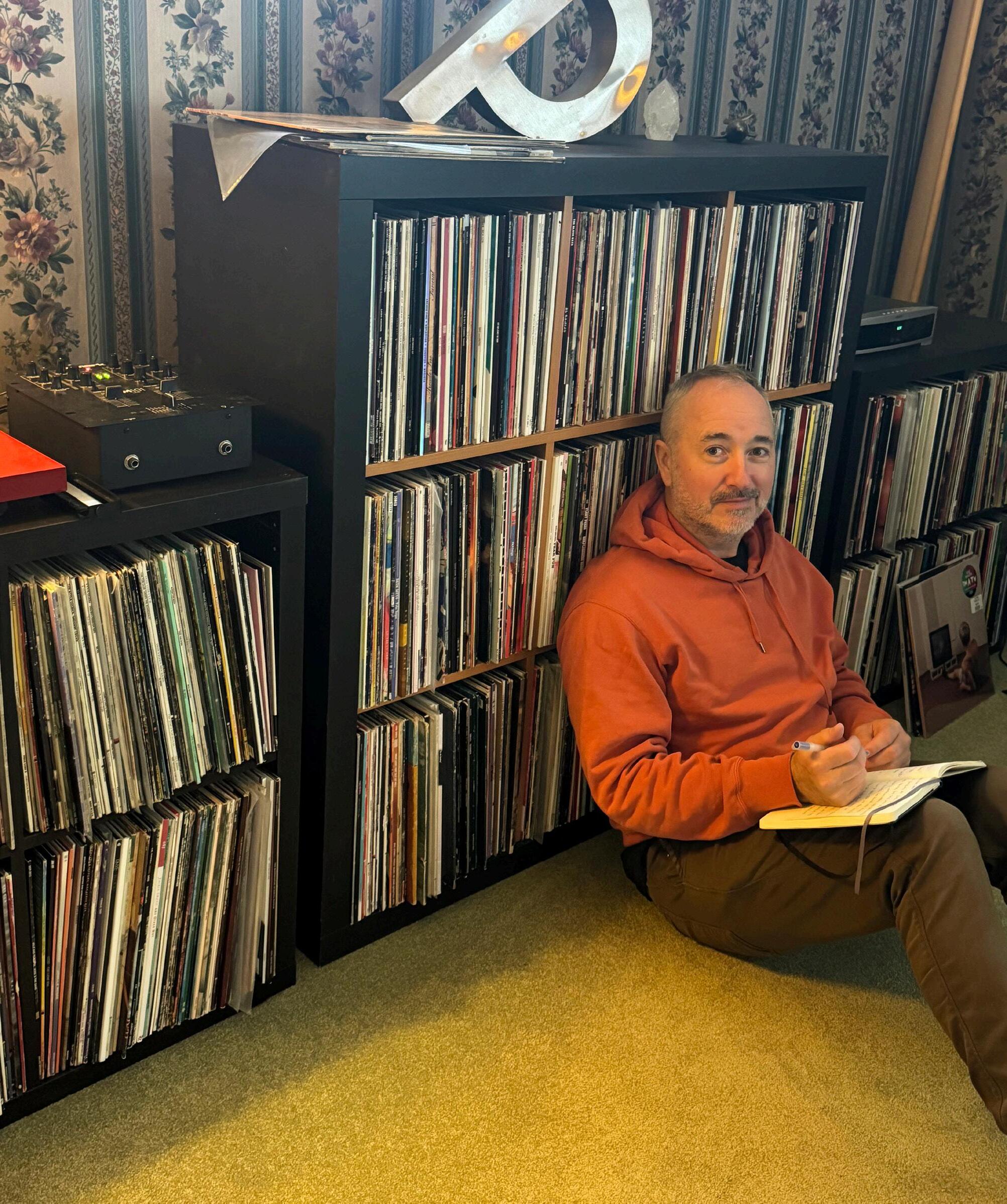
When we think of sexual adventurousness, we might think of a particular era, like New York in the 1970s, at the very beginning of the modern 2SLGBTQI+ liberation movement, just before HIV/AIDS ended that sense of freedom. Or we might think of a particular stage of life, like a gay guy in his 20s who has the brazenness and wherewithal – and the physical energy – to try out a variety of sexual partners and situations, figuring out the sexual tastes and desires he’ll follow for the rest of his life – and learning which intimate acts and scenes leave him cold.
But in his new memoir, Toronto writer Pete Crighton lays out another scenario: middle-aged promiscuity. The Vinyl Diaries: Sex, Deep Cuts and My Soundtrack to Queer Joy chronicles what you might
call Crighton’s second coming out. “Finally I met a guy who blew it all wide open for me, and at forty-five I was about to have my heart broken for the first time,” he writes early in the book.
Crighton had spent his 20s, 30s and early 40s with his back mostly turned to the gay scene, afraid of HIV/AIDS and tucked inside two unsatisfying long-term relationships. “There was safety in monogamy. I swallowed it wholesale,” writes Crighton. “I finally met a man in the year 2000…. I didn’t have to enter a gay space, I didn’t have to put myself out there, and I didn’t have to introduce myself to a stranger…. I spent the entirety of my thirties in a monogamous relationship with a man who wasn’t right for me, nor was I right for him.”
When his second long-term relationship came to an end, and the guy who helped end it proved to be unavailable, Crighton took a leap of faith and got himself on the hookup apps, a way of meeting up for dates and sex that until that point had passed him by. He nearly backed out of his first app-arranged hookup, thinking, “this was exactly the kind of encounter I was convinced would kill me.” But it didn’t. He had fun.
Over the next few years, Crighton met a series of mostly younger gay men (and eventually ditched his corporate job to become a full-time writer). Each liaison had its own character – furtive, passionate or friendly, which Crighton recounts to readers in prose that’s neither pornographic nor shy. “He was moaning and twisting on top of me and in a minute or two his cum joined mine on my chest.”
Almost every liaison was marked by a soundtrack that was usually, but not always, provided by Crighton. He’d put on Kate Bush, Stevie Nicks, Billy Bragg or maybe k.d. lang, advocating each artist’s brilliance to his lover of the moment. In an interview, Crighton, who once worked as cultural programmer at Toronto’s Gladstone Hotel, told me that his life has been defined by music, so it was natural that music defined each sexual adventure. “A great love of mine is listening to music, but also sharing it. In my younger years, it was easy to associate with certain people because they liked a certain kind of music,” he says. “These days I wish there was more embrace in the gay community of difference genres – rock ’n’ roll, real soul, punk. It just seems like there’s a diva du jour every six months and everyone hops on that train and that’s all gay guys want to talk about.”
The idea for a book that married music and chronicles of casual sex emerged from Crighton’s lifelong habit of keeping a journal. As he went through this new stage of his life, making observations about moments that were sexy, funny or awkward, he was encouraged by his friend Carolyn Taylor, of Baroness von Sketch fame, to write it all down. “After every one of these dates, I would call her or text her: ‘Oh my God, you will not believe what happened,’ and I’d recount the story. Every single time she was like, ‘Write that down, put it in your journal.’ I was like, ‘Why?’ She said, ‘One day you’ll know.’ She was right.”
Though casual sex is Crighton’s method for opening up his life, getting off wasn’t the goal itself. “I wasn’t thinking, ‘Well, I’m gonna have a ton of sex now.’ It wasn’t that conscious a decision. I just followed my heart and met some interesting men,” he tells me. “That was a wonderful discovery for me because I’d always sort of thought casual sex was shameful. I didn’t think it was true intimacy. Those were great things to be proven wrong about.”
While many gay men complain about feeling invisible as they grow older, Crighton did not seem to have such a problem. Maybe it’s simply that daddies are hot these days. Though Crighton was eager to mentor his younger partners on music, he also learned a lot from them – and not just about the latest cool bands.
“Many of them had hot experiences when they were in their teens and met someone older, like late 20s or early 30s. But some not so much. I think the bigger damage is that they kept it all in secret and they carried a lot of shame about some of those experiences. It’s not because of the sex, but the inability to talk to their peers, to talk to their parents about it,” says Crighton. “But then, I met a lot of men who had zero sexual inhibitions and fear of sex, which was transformative for me.
Wow, that’s possible.” Seeing younger guys’ willingness to have sex with older men also made him more open to dating guys older than himself. Not to give anything away, but that new open-mindedness plays a part in the book’s happy ending.
For most of his midlife adventures, Crighton continued using condoms; old habits and fears die hard. He did eventually start using PrEP, which he says gives him the choice to use condoms or not. But again and again, for Crighton, it was less about the sexual pleasure itself than in being relaxed enough to build a queer world of his choosing.
“That fearlessness played out everywhere in my life. As I was turning 50, I looked around and thought, ‘These are the people I want to be surrounded by. These are the relationships I want to foster.’All of these things helped lift me up to this amazing place,” he says.

The Vinyl Diaries: Sex, Deep Cuts and My Soundtrack to Queer Joy was released in May by Random House Canada. It is available online and in select bookstores across the country.
CDC Reports First Cases Of AIDS (June 5, 1981)
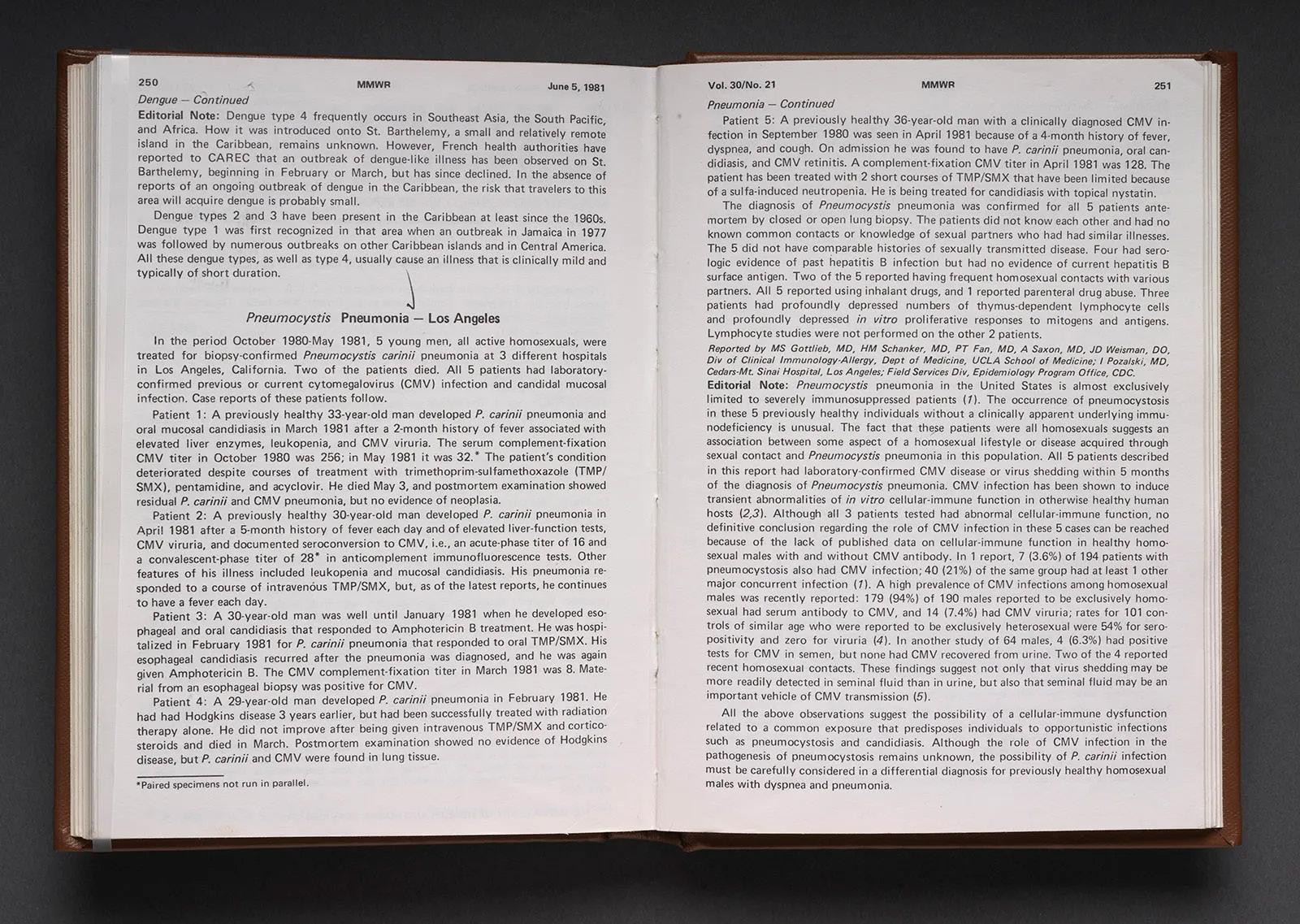
On June 5, 1981, the first cases of the illness now known as Acquired Immunodeficiency Syndrome (AIDS) were reported in the US Centers for Disease Control and Prevention’s (CDC’s) Morbidity and Mortality Weekly Report (MMWR). The report announced that five previously healthy young gay men in Los Angeles had contracted a rare lung infection, known as Pneumocystis carinii pneumonia (PCP), along with other opportunistic infections.
Los Angeles immunologist Dr. Michael Gottlieb, CDC’s Dr. Wayne Shandera, and their colleagues reported that all the young men had other unusual infections as well, indicating that their immune systems were not working. Two of the men had died by the time the report was published, and the others died soon after publication.
In the years prior to the publication of the report, a few physicians and public health workers in coastal cities had
noticed strange opportunistic infections in otherwise healthy gay men, but the June 5 edition of the MMWR marks the first official reporting of what would later become known as the AIDS epidemic.
By the end of 1981, the disease was given the name of GRID (Gay-Related Immune Deficiency), “gay plague” or even “gay syndrome,” because it only seemed to affect homosexual men.
Interestingly, the same day that the MMWR was published, New York dermatologist Dr. Alvin Friedman-Kien called the CDC to report a cluster of cases of a rare and unusually aggressive cancer – Kaposi’s Sarcoma (KS) – among gay men in both New York and California. Like PCP, KS is also associated with people who have weakened immune systems.
June 5 now marks HIV Long-term Survivors Awareness Day.
IN Magazine is grateful to our corporate and community partners who together, through their generous financial and in-kind support, contribute to our mission of celebrating and elevating Canada’s 2SLGBTQI+ communities 365 days a year.
PRESENTING SPONSOR












